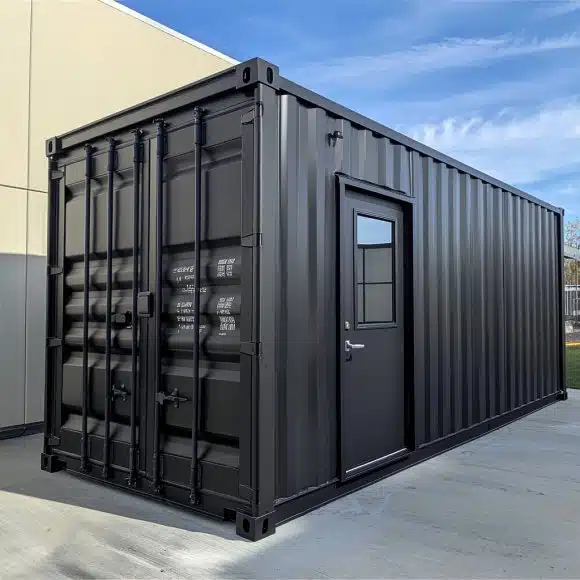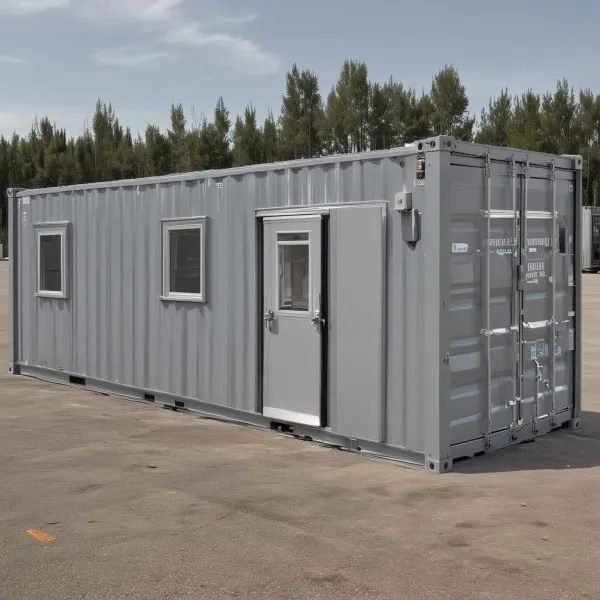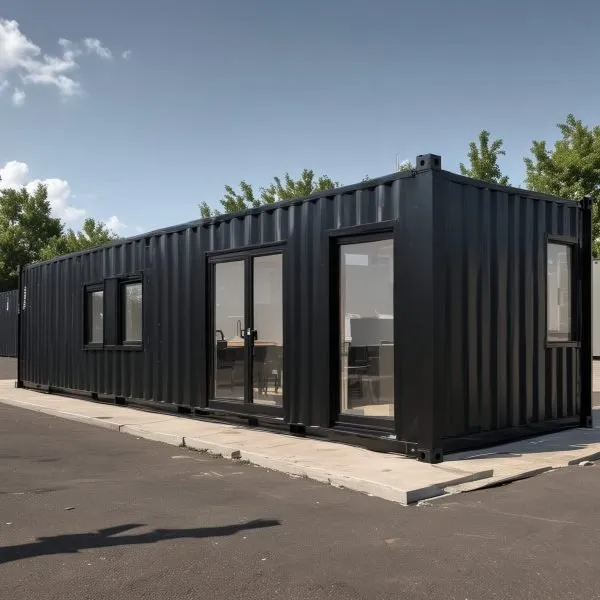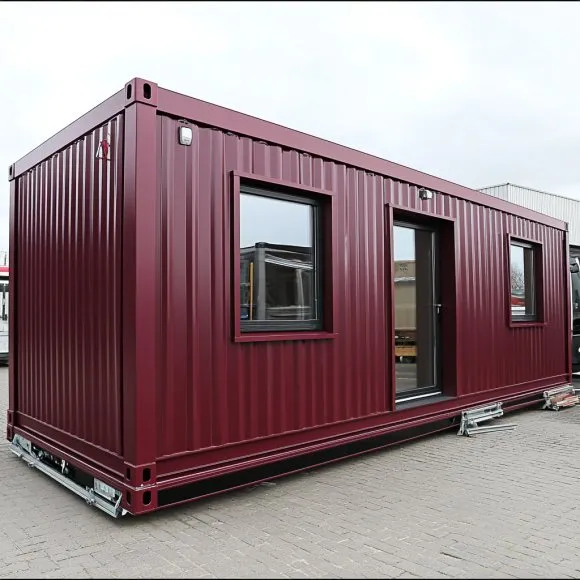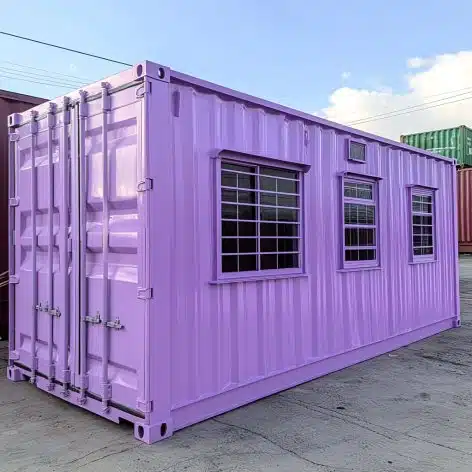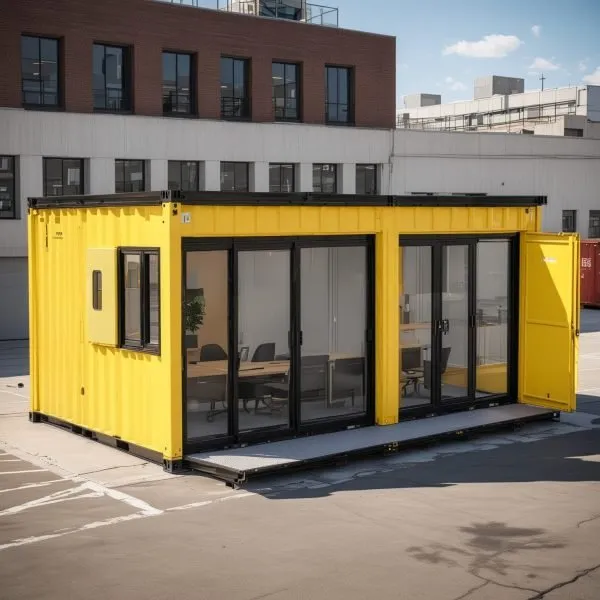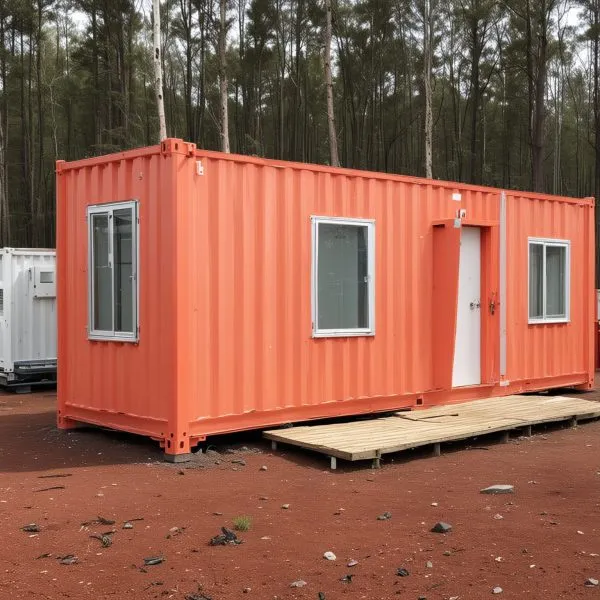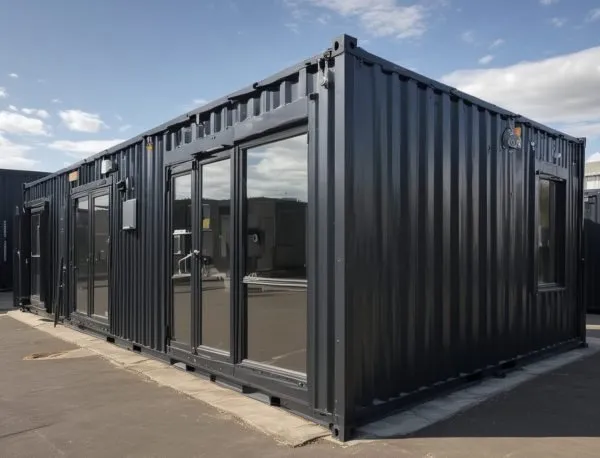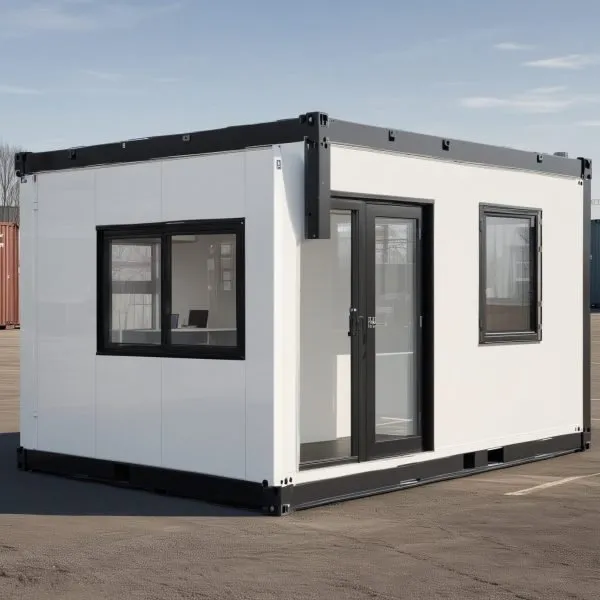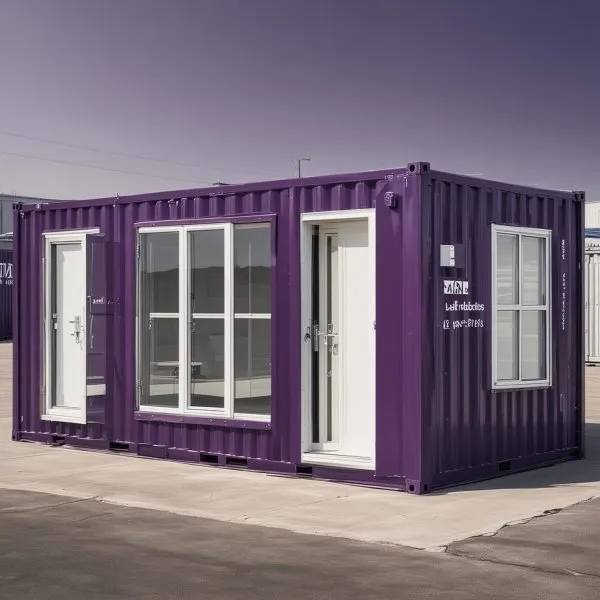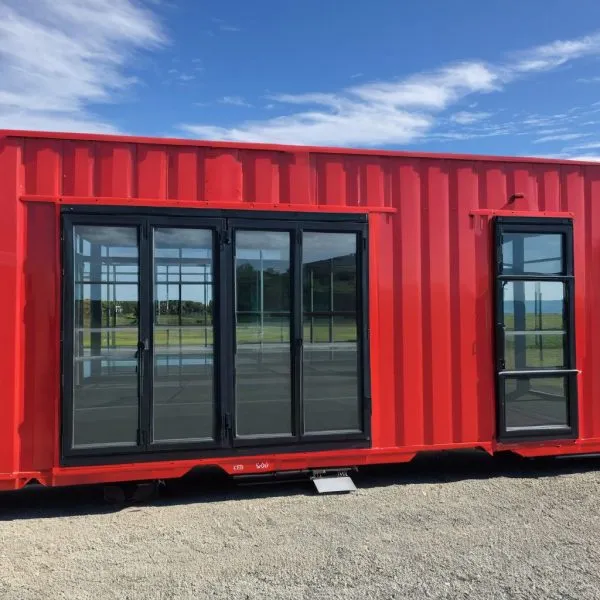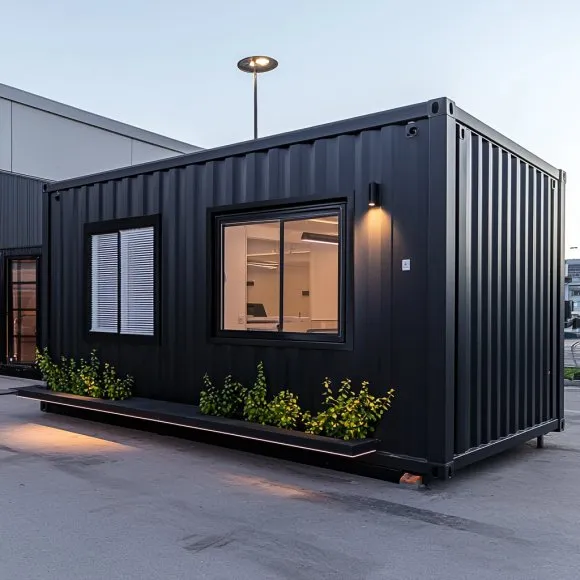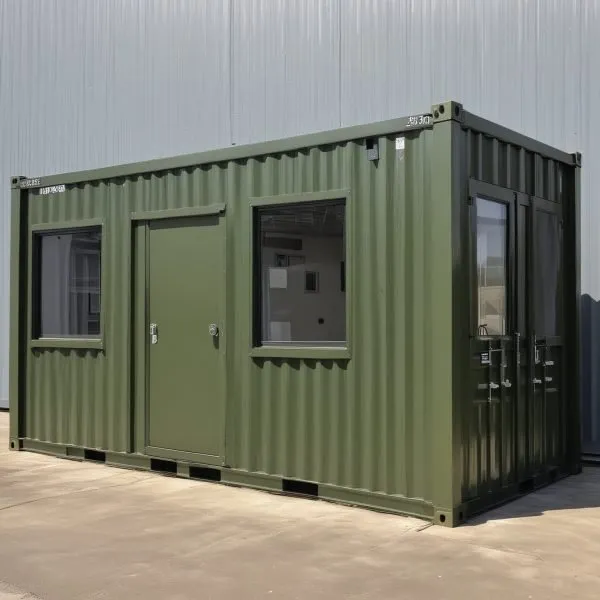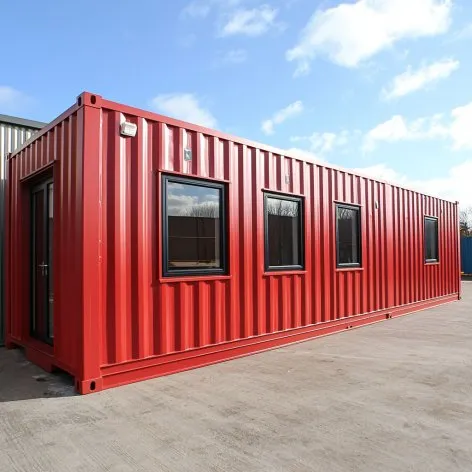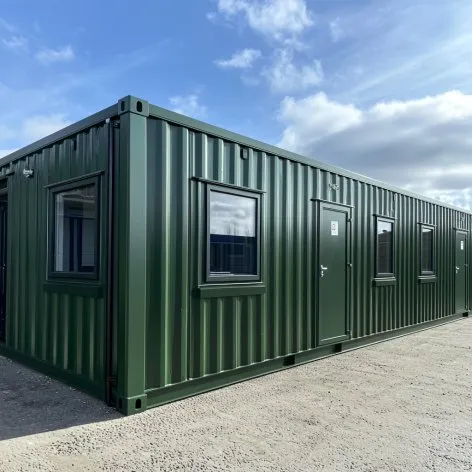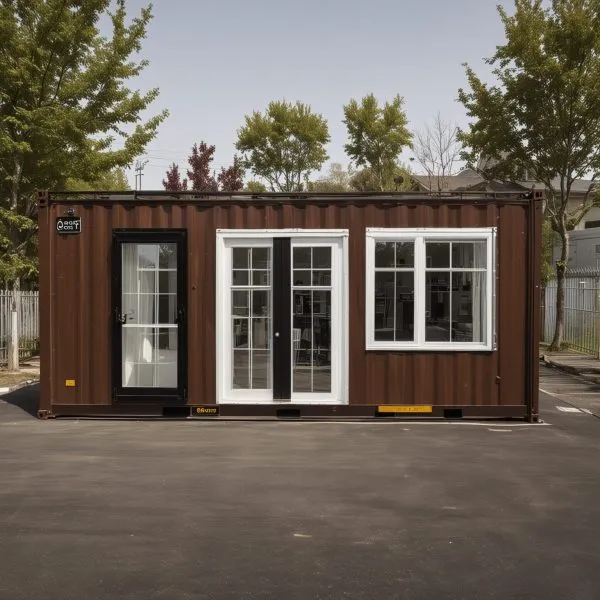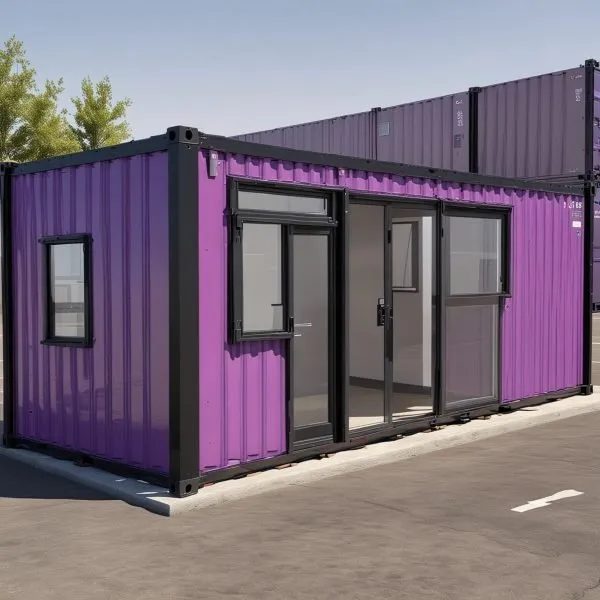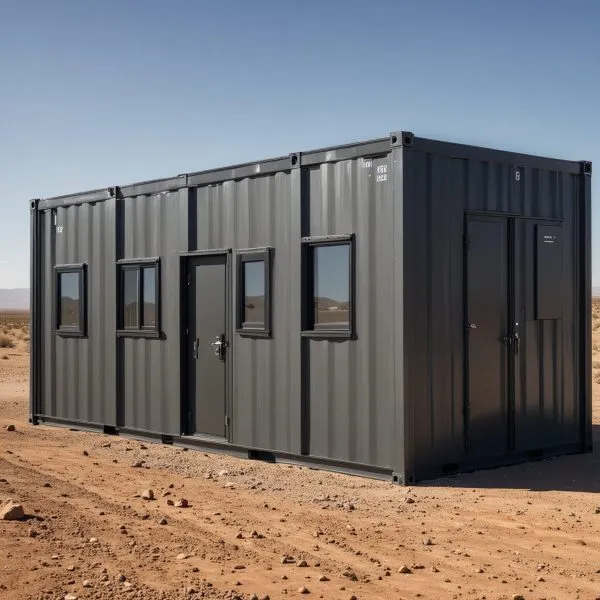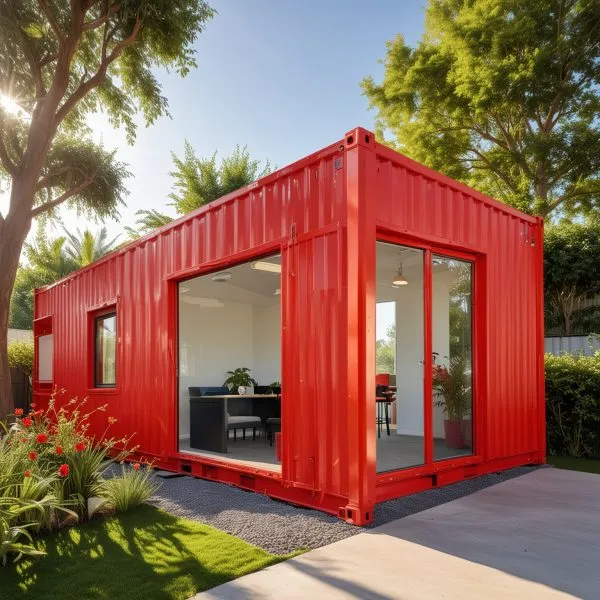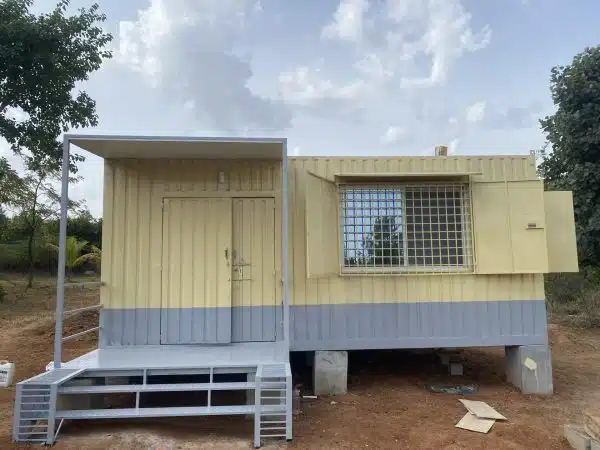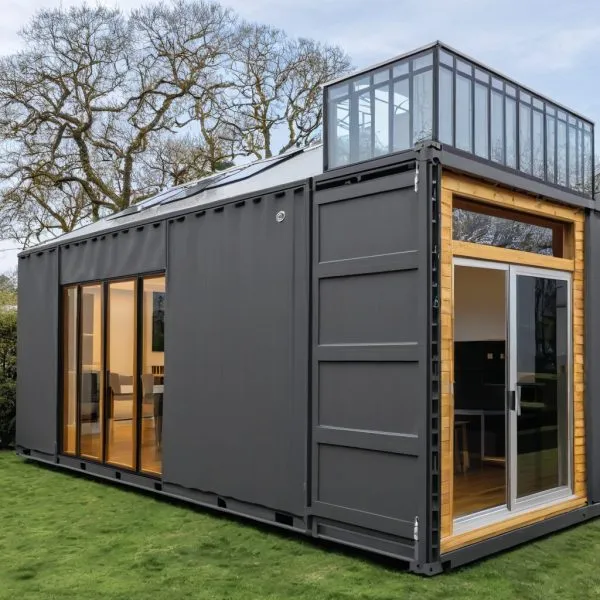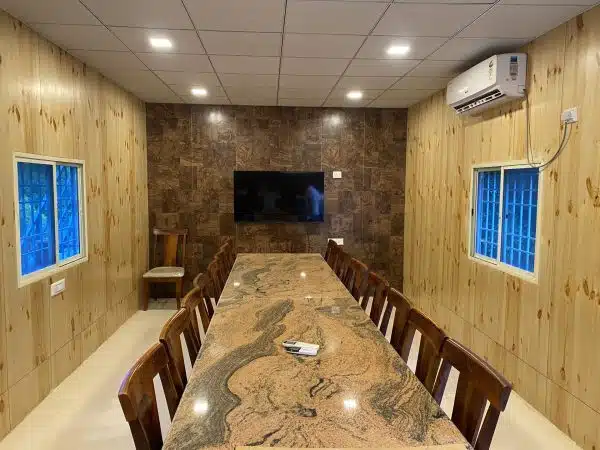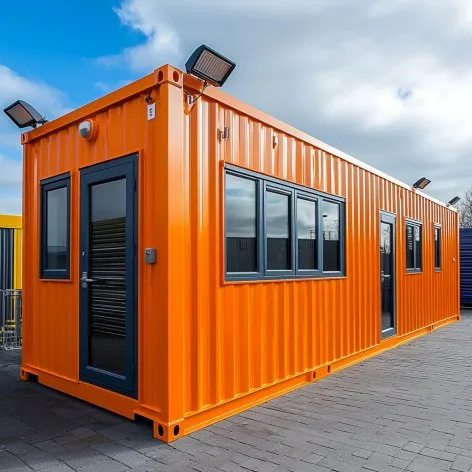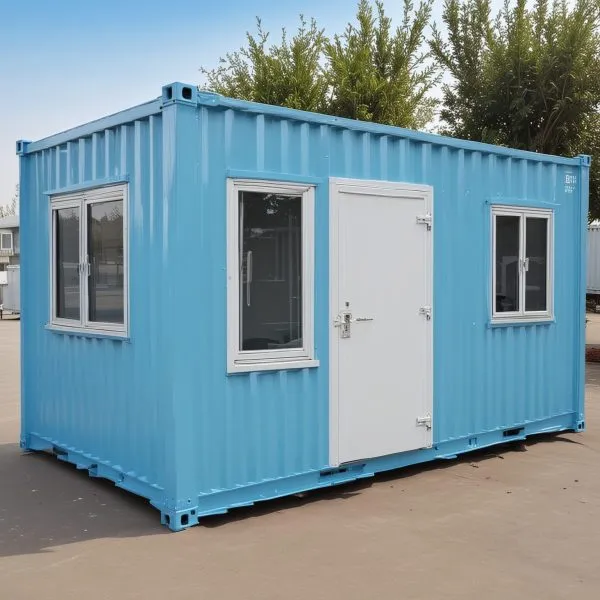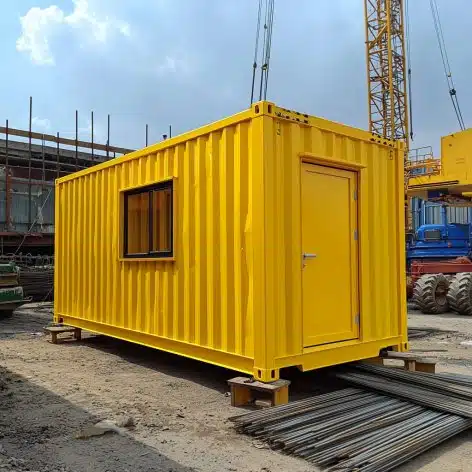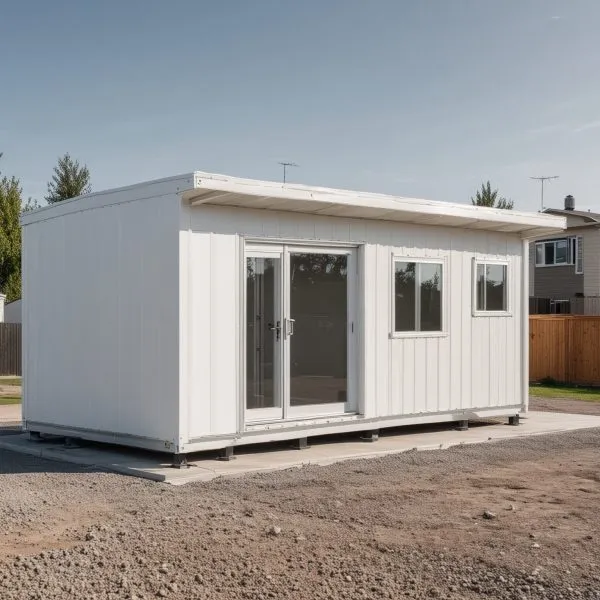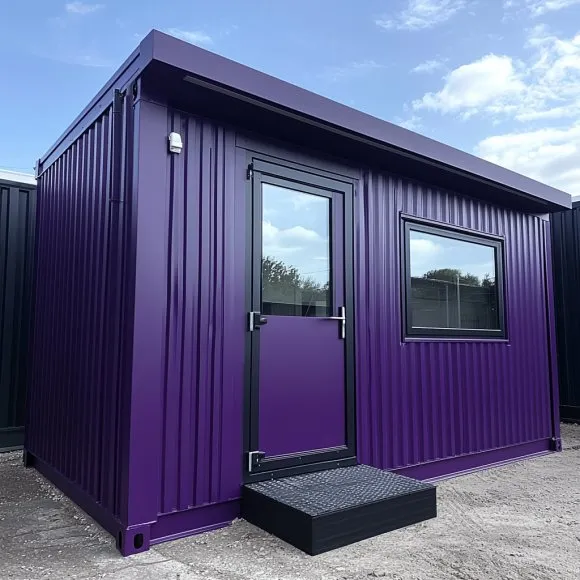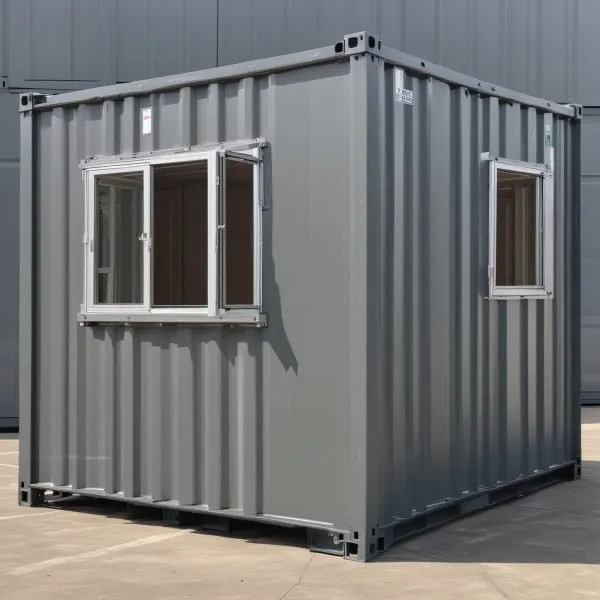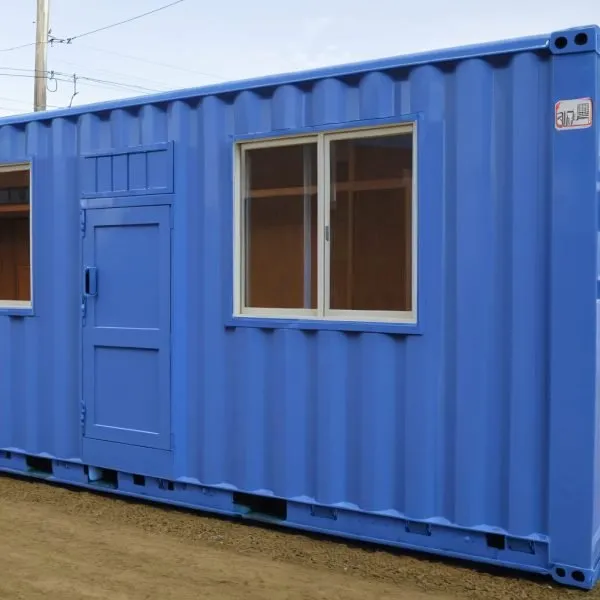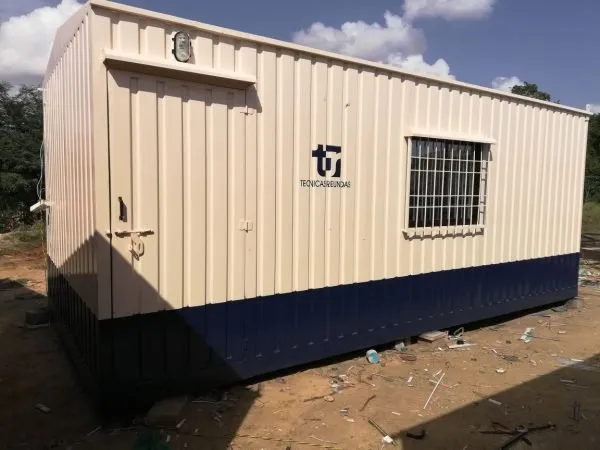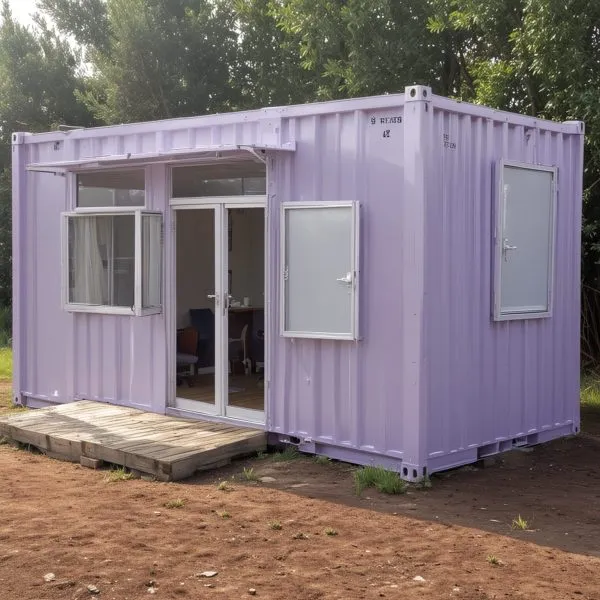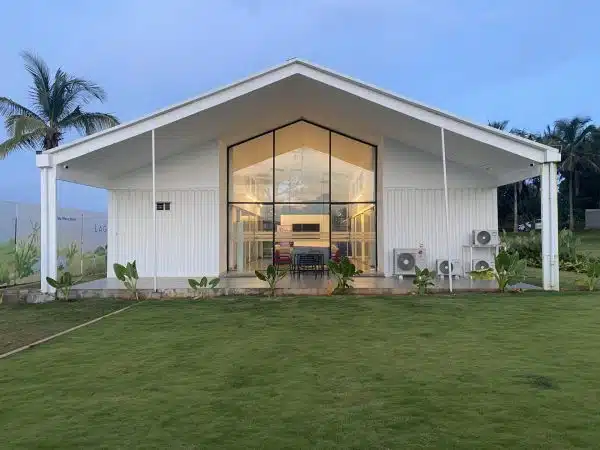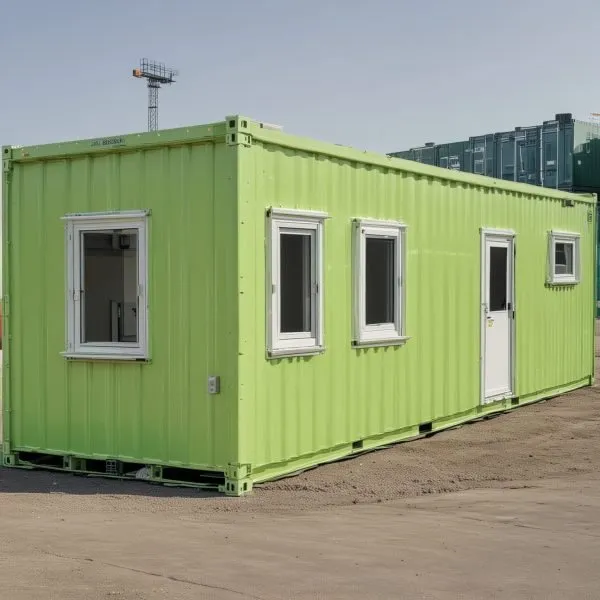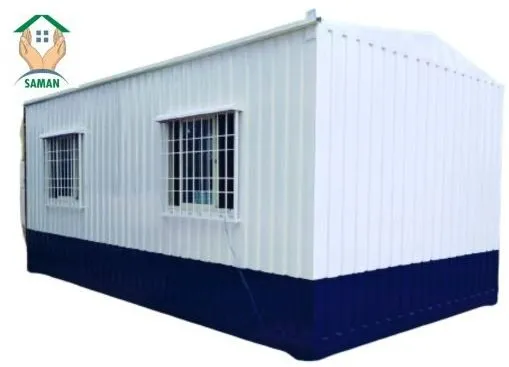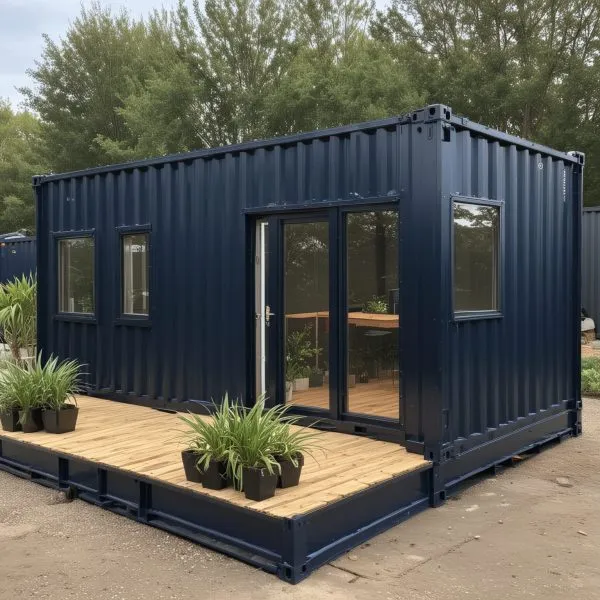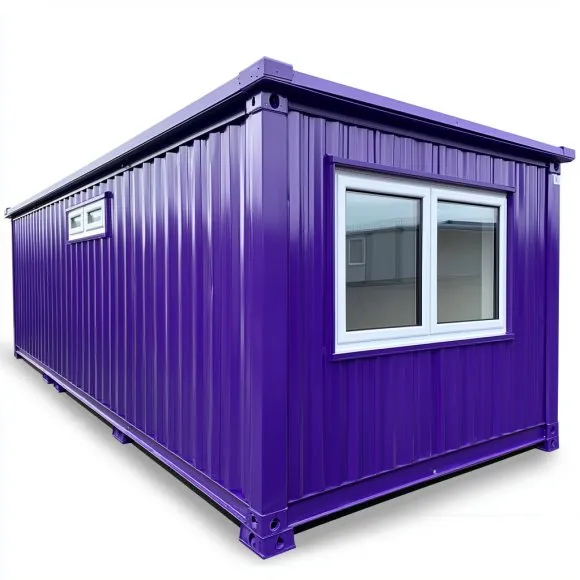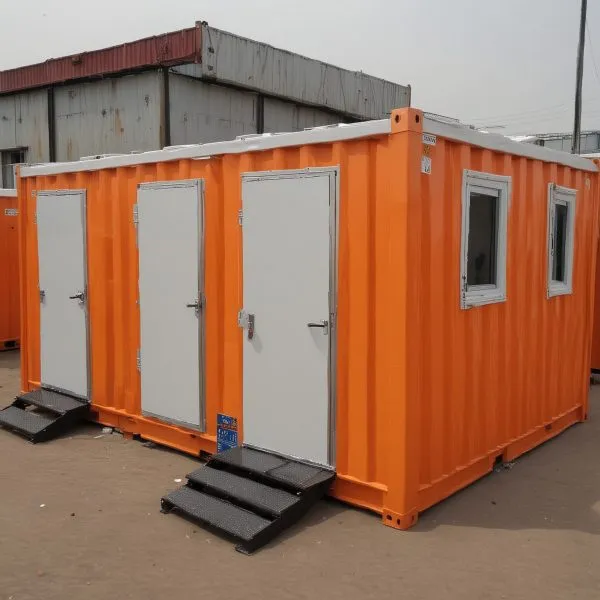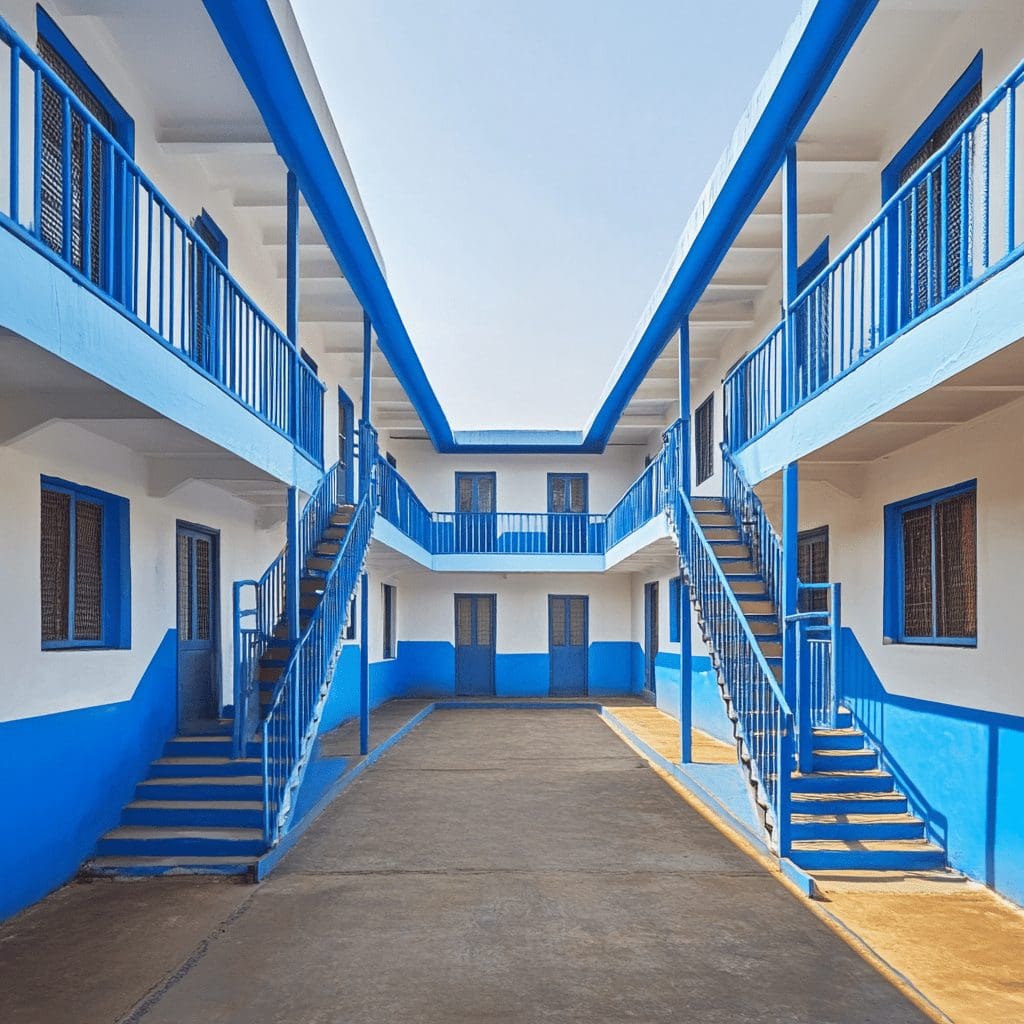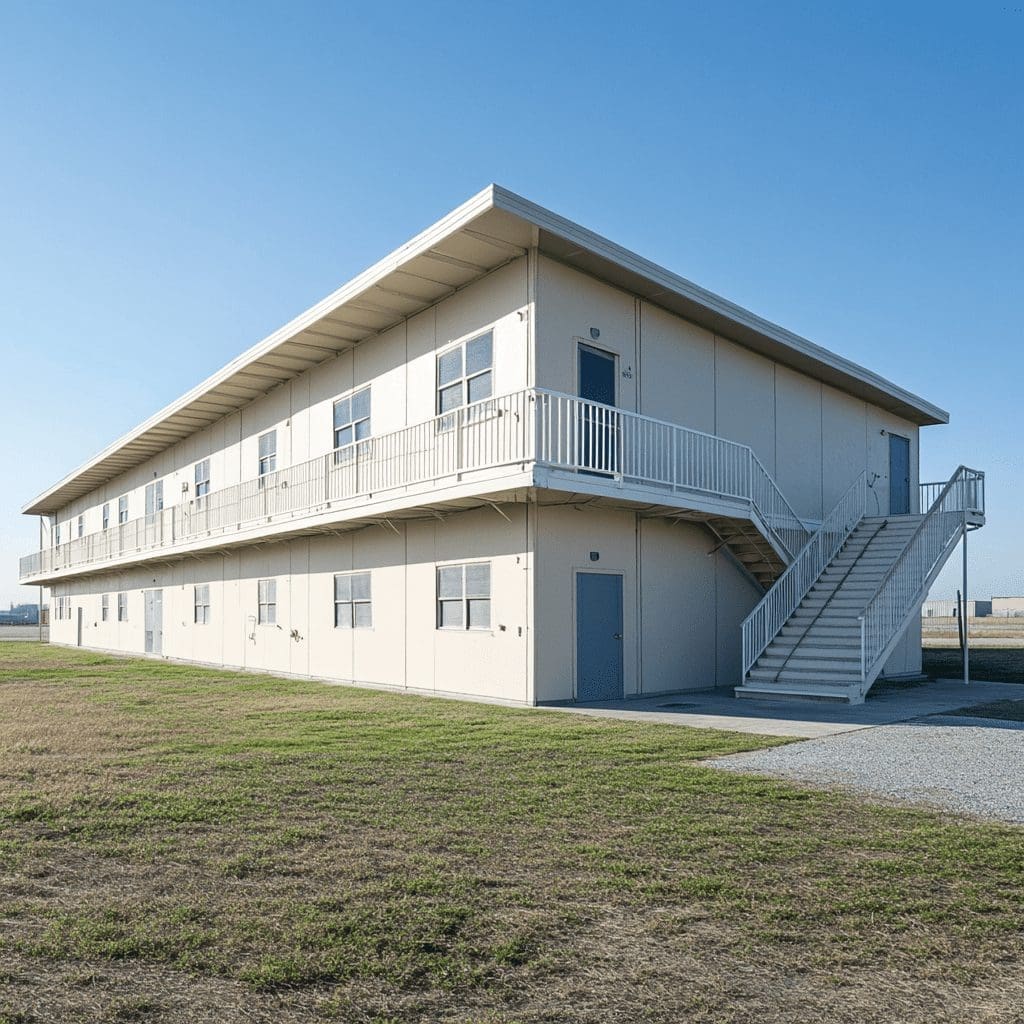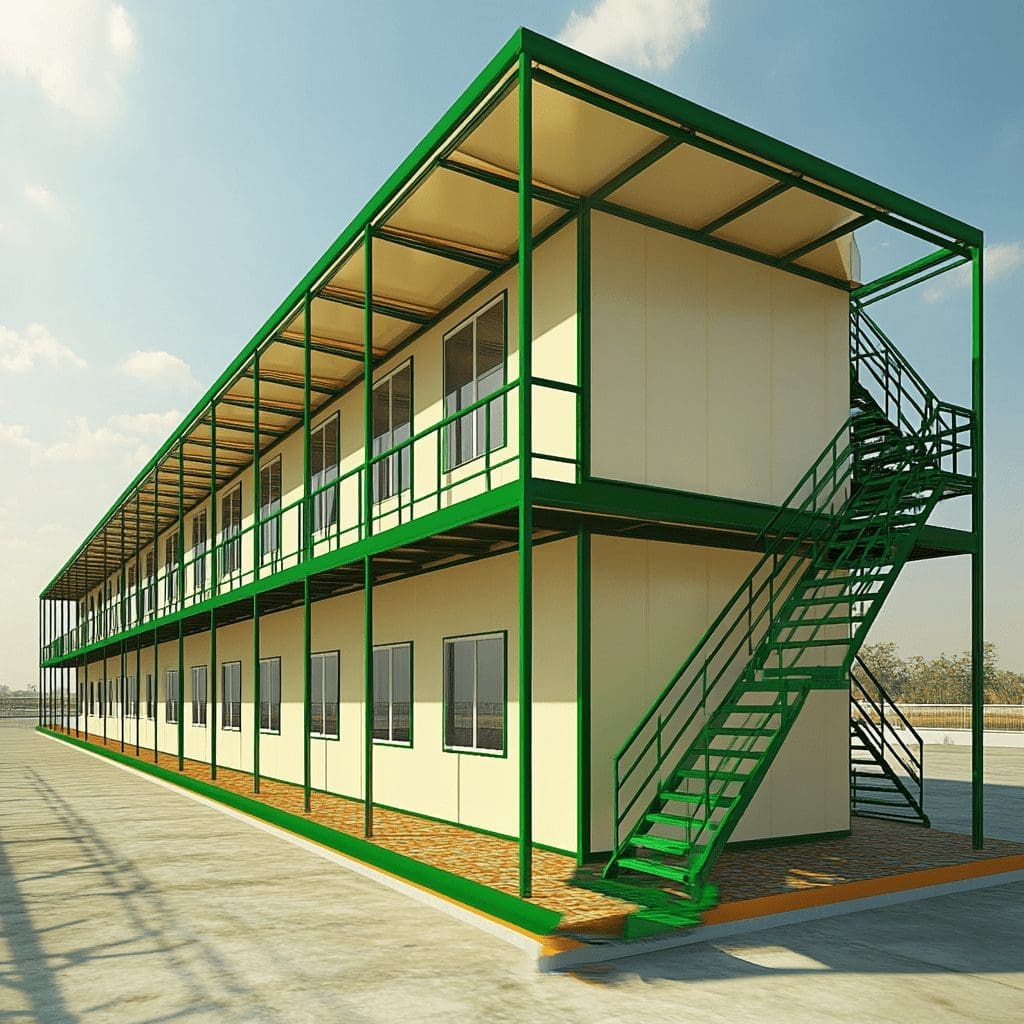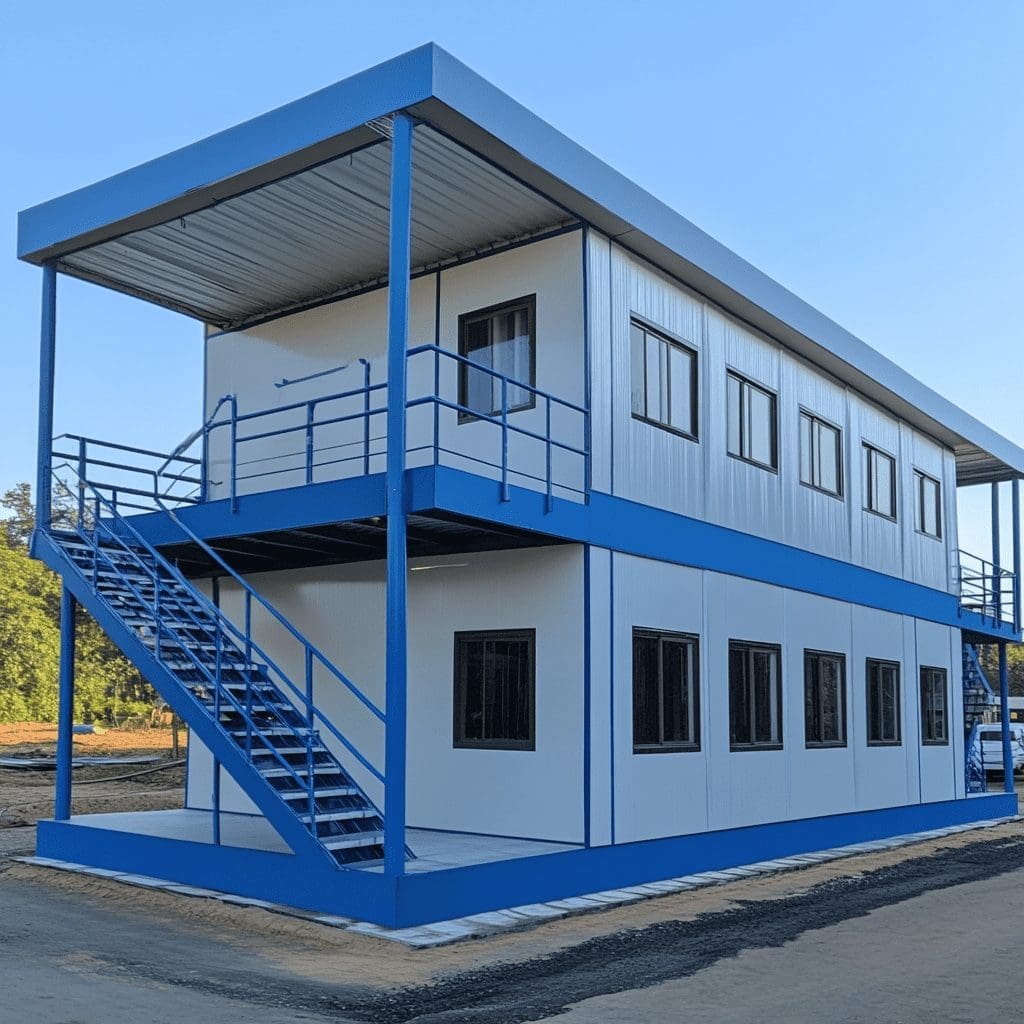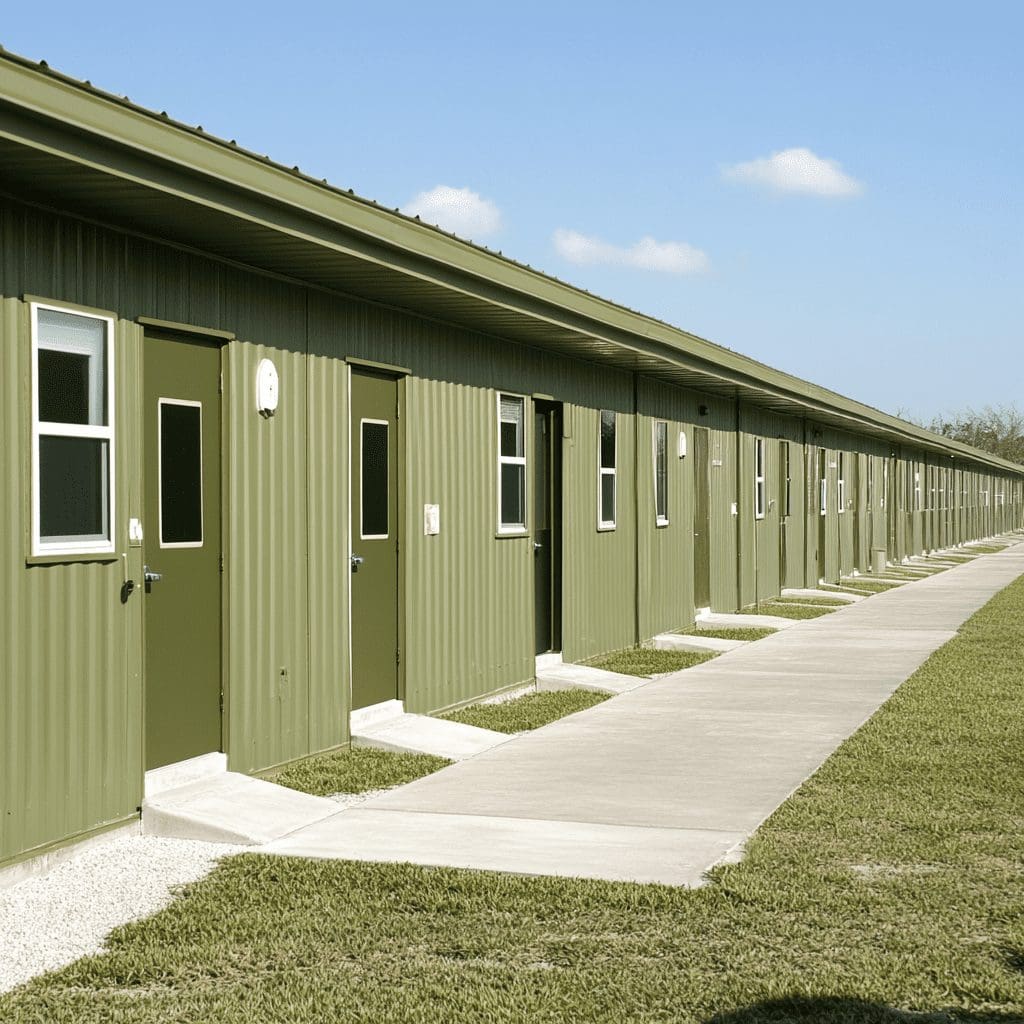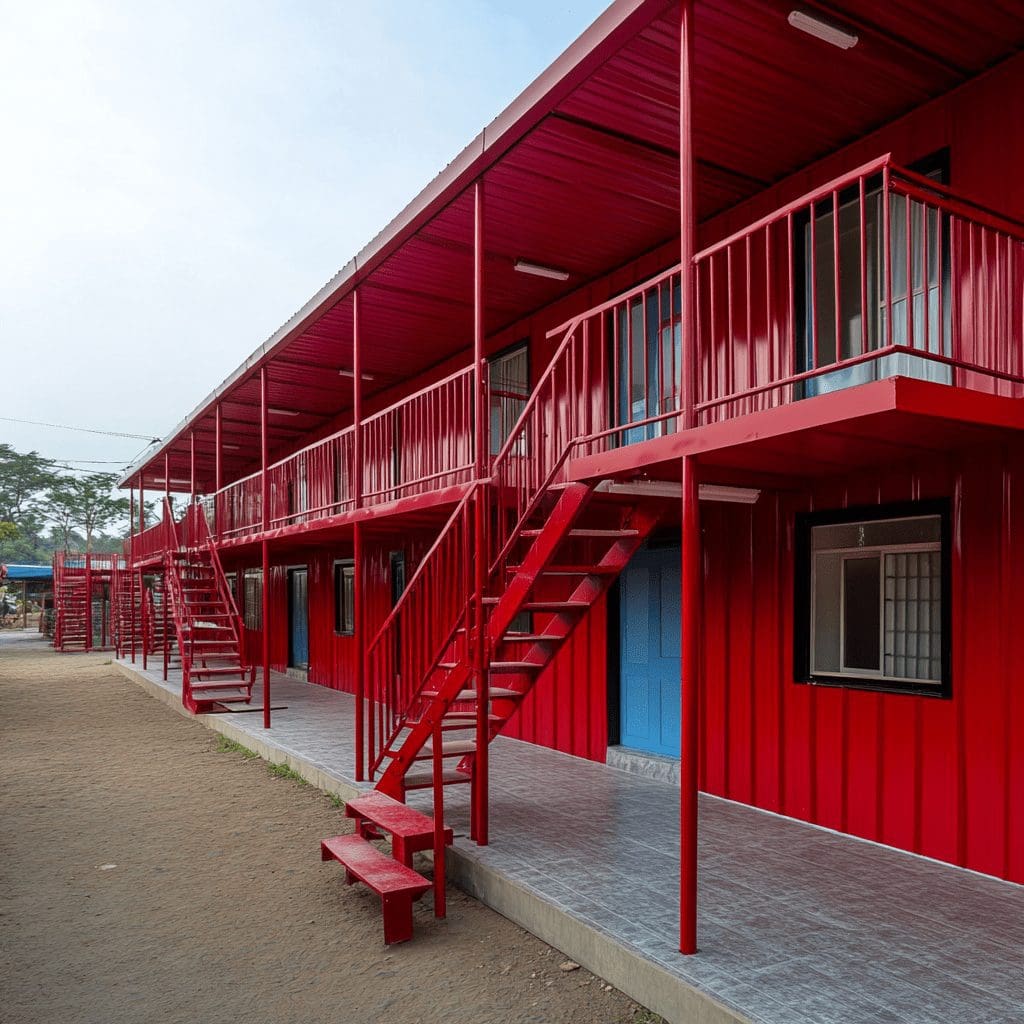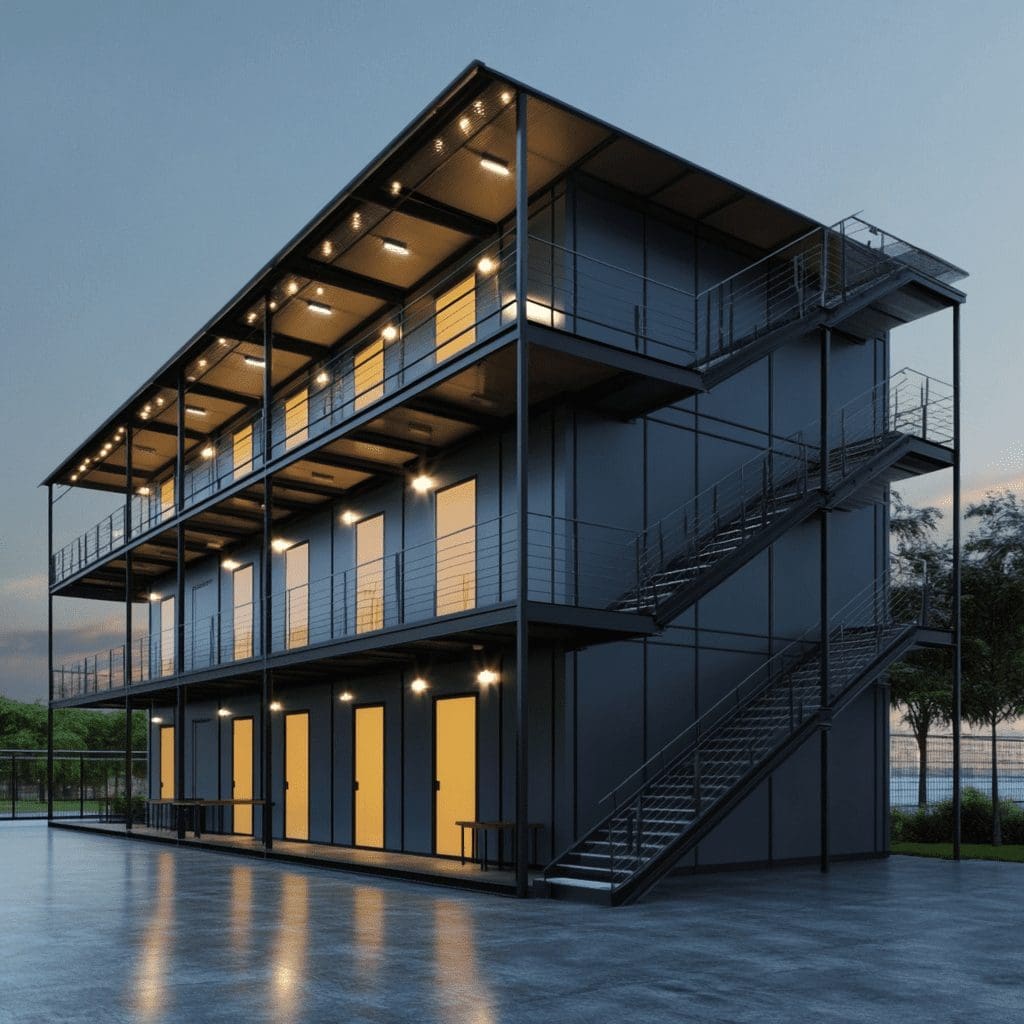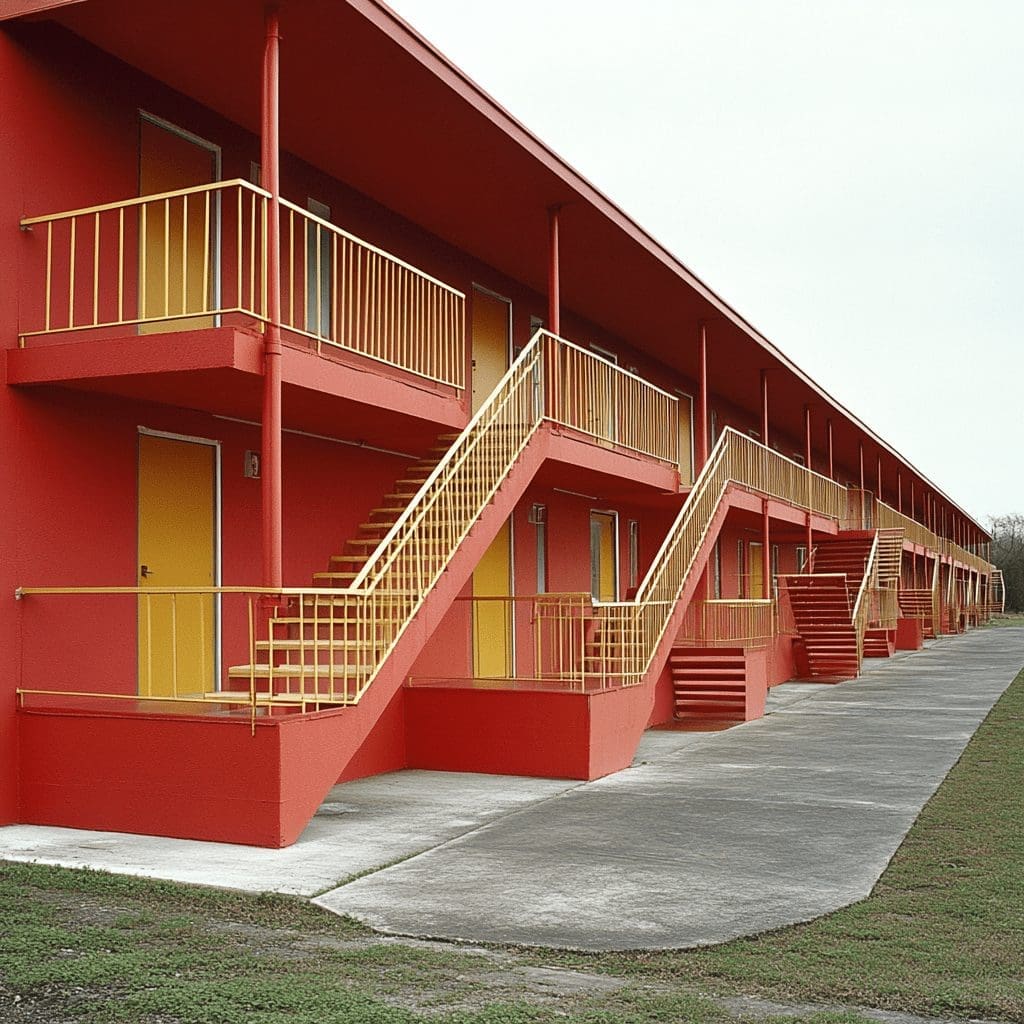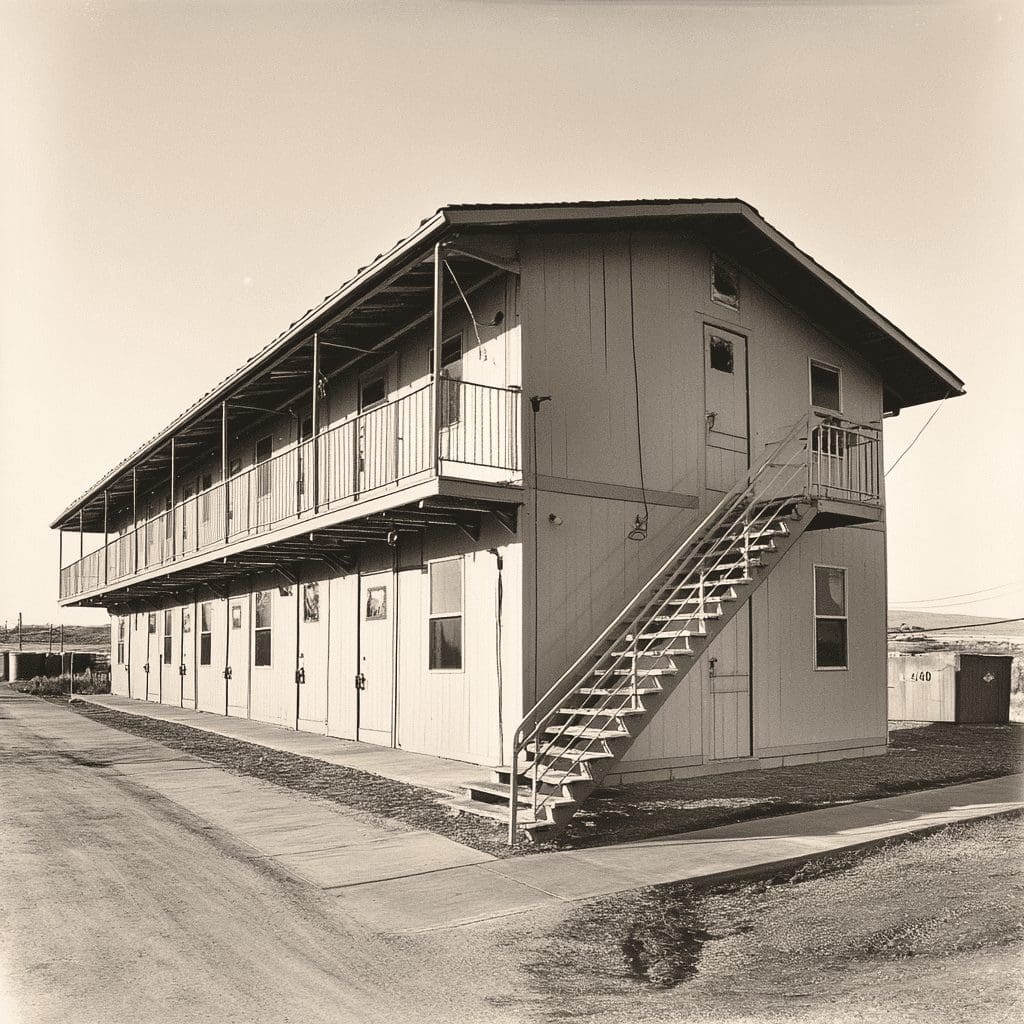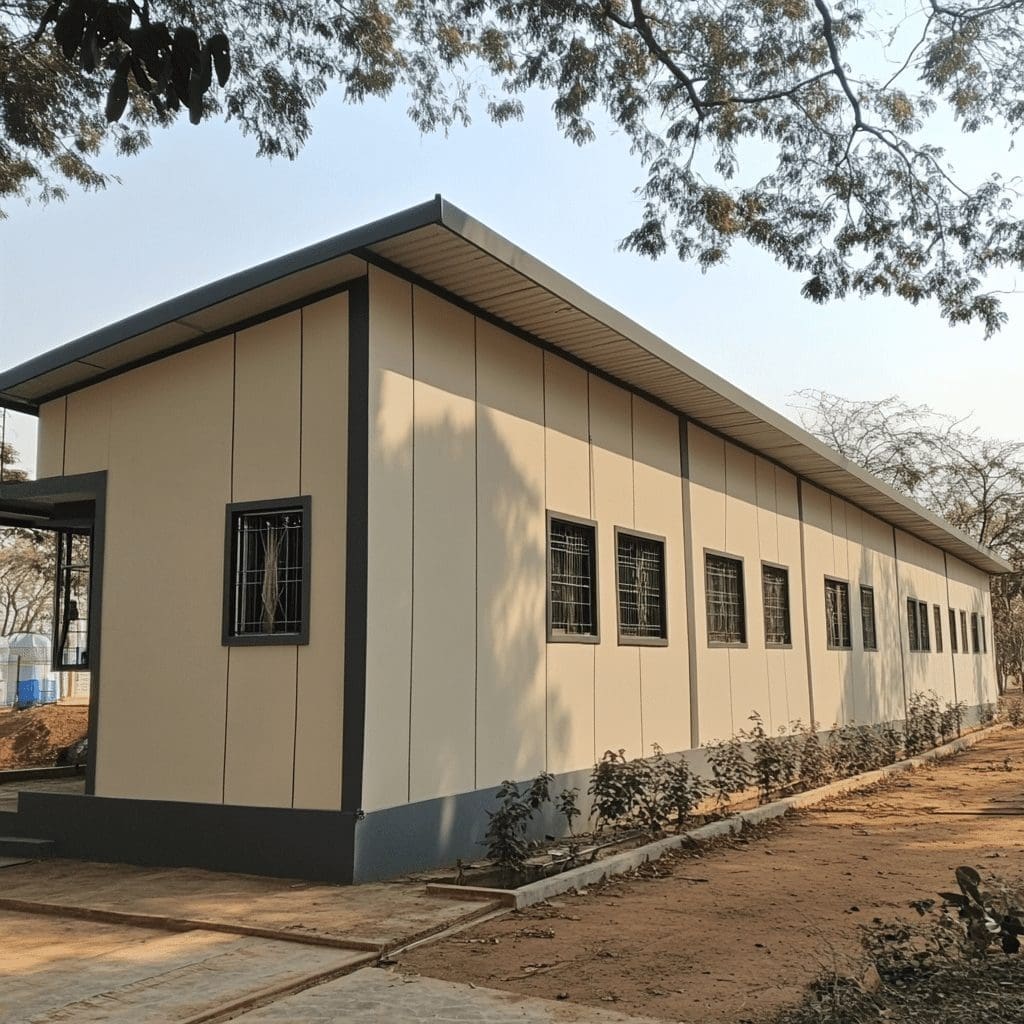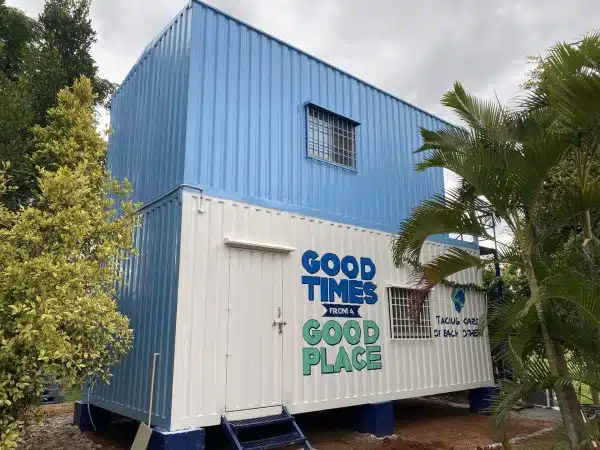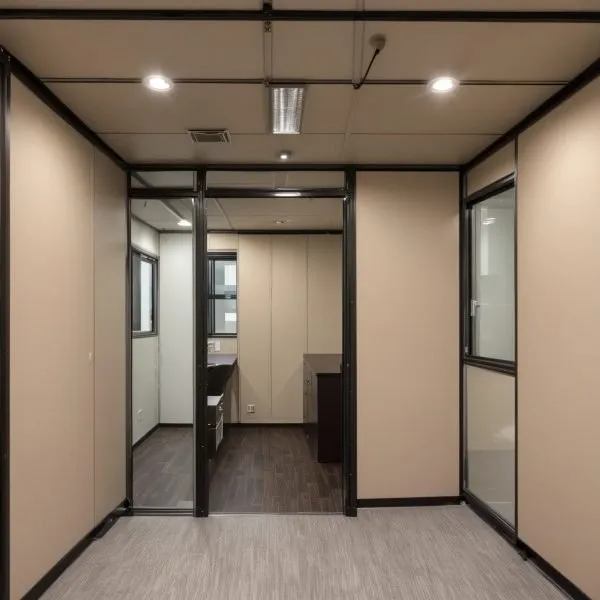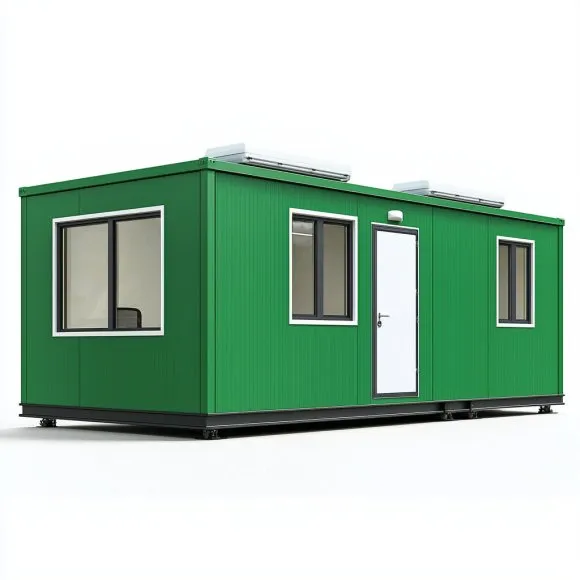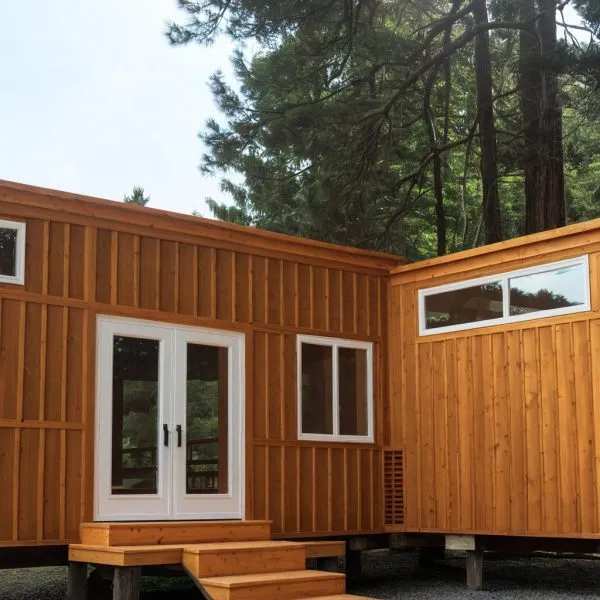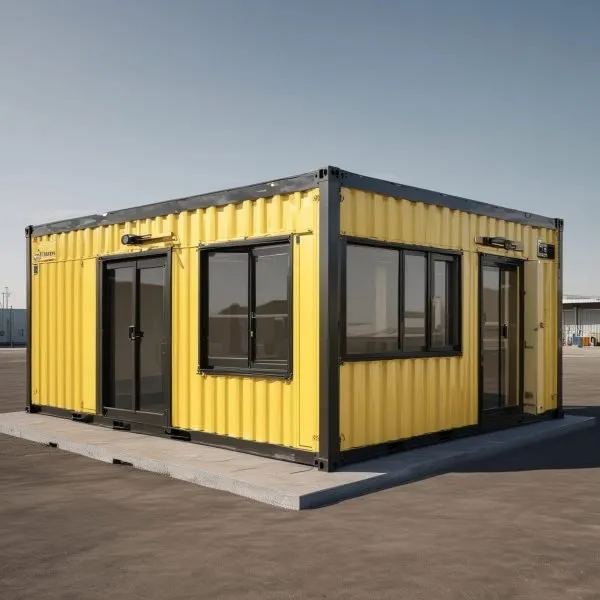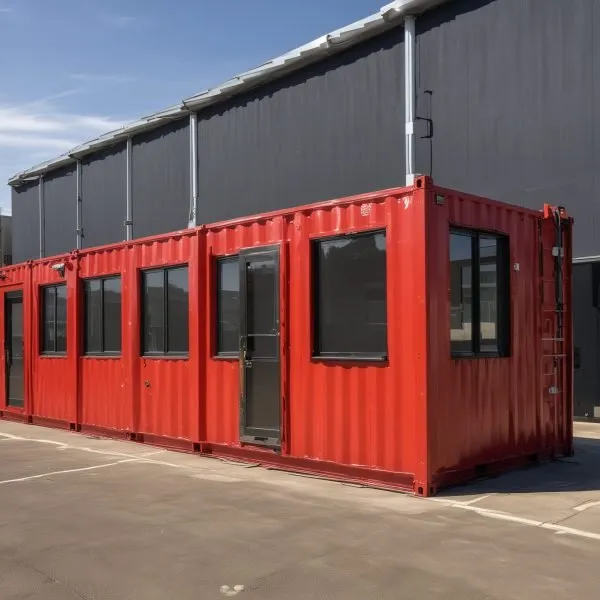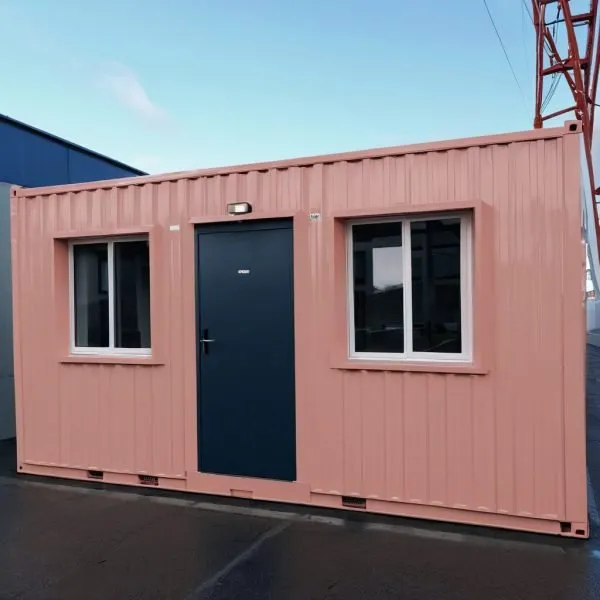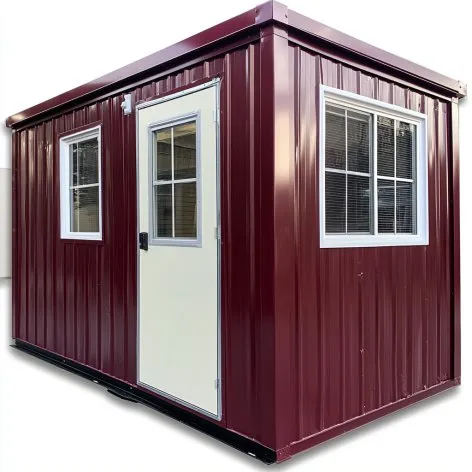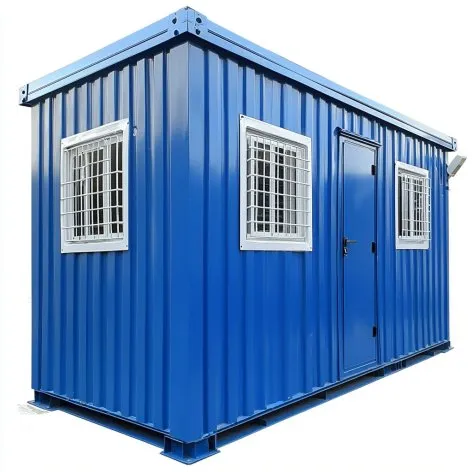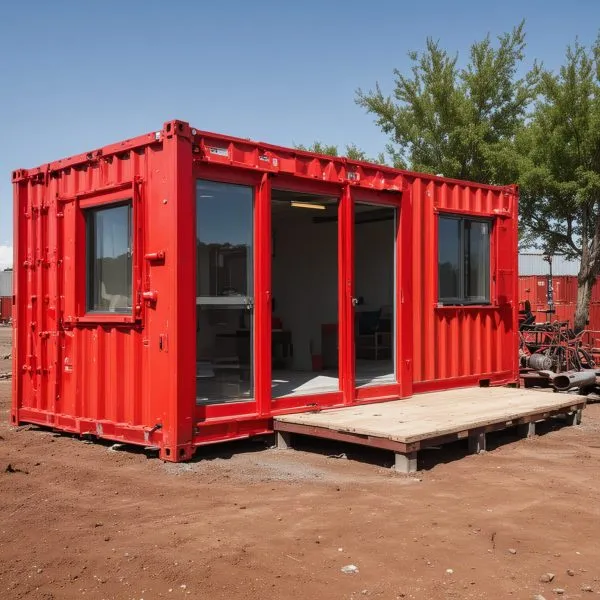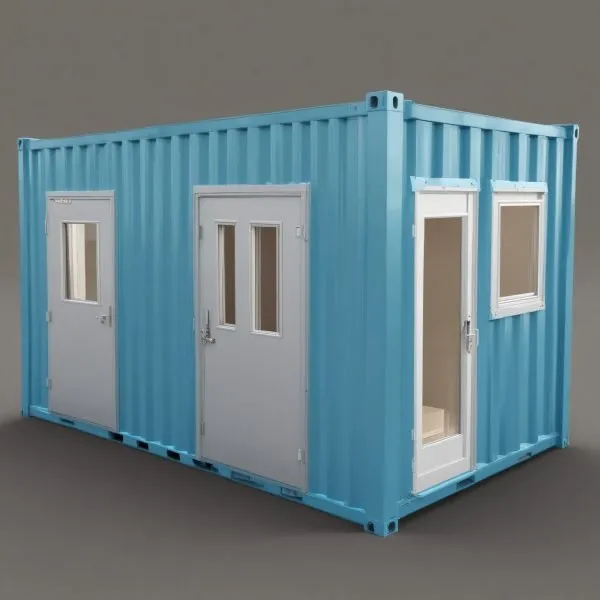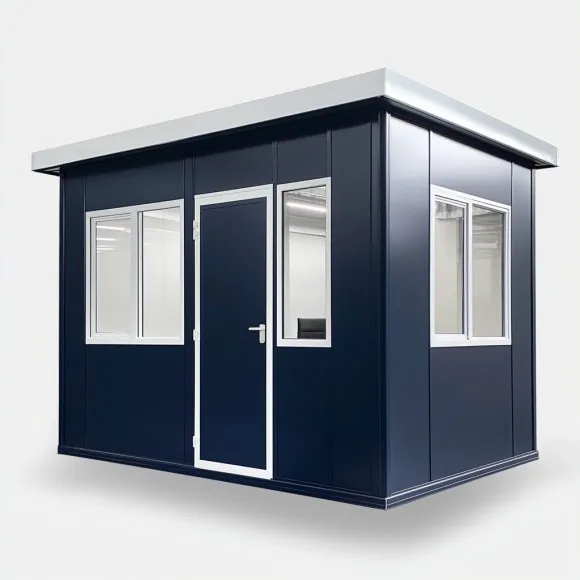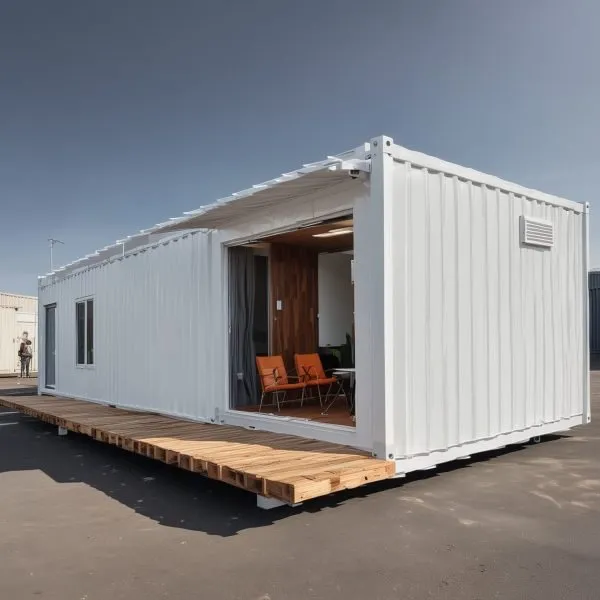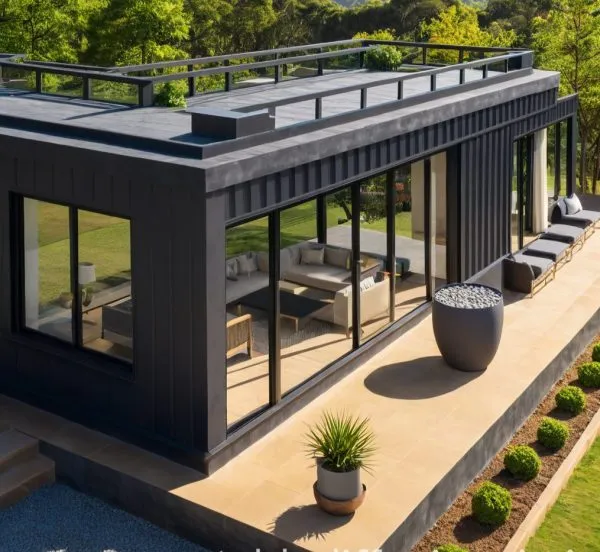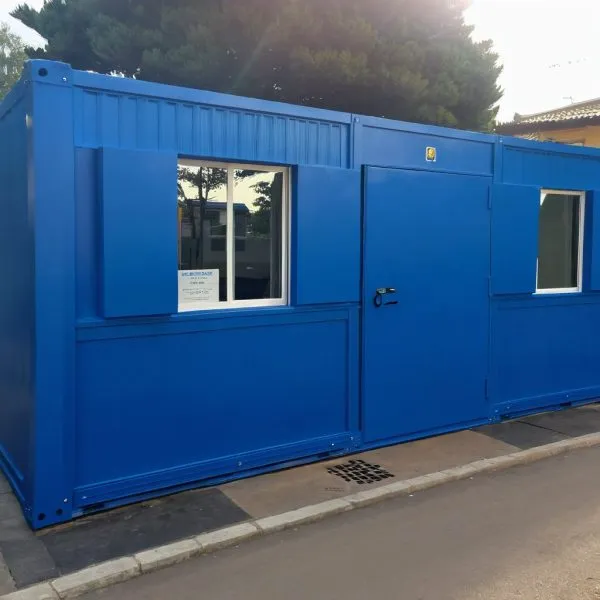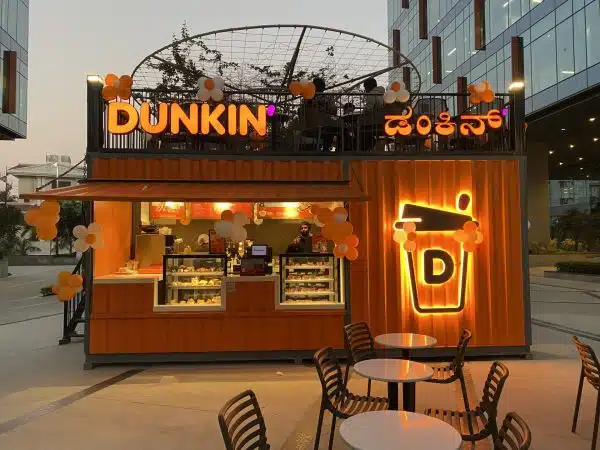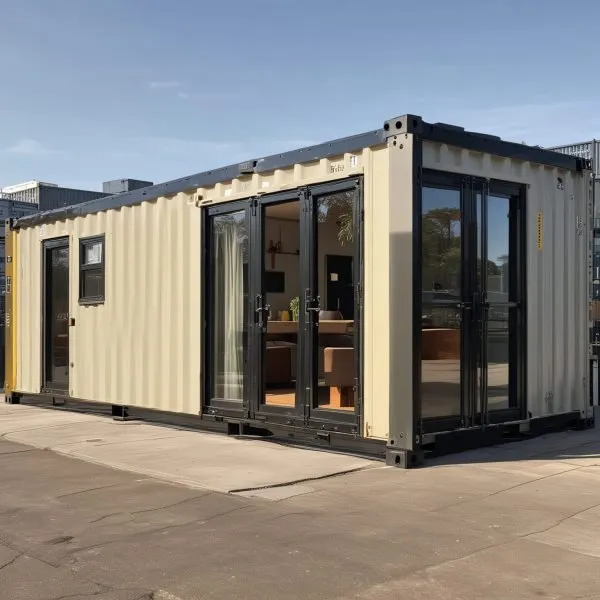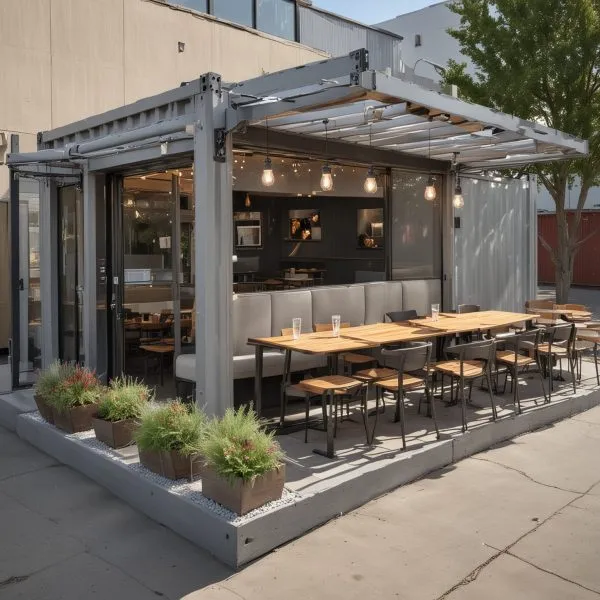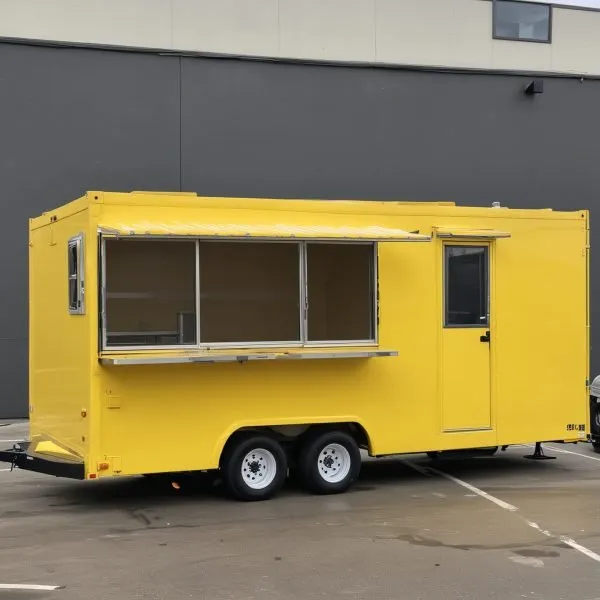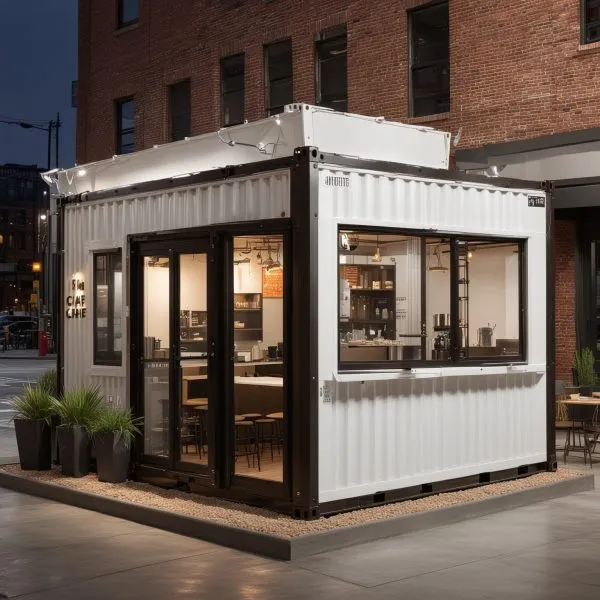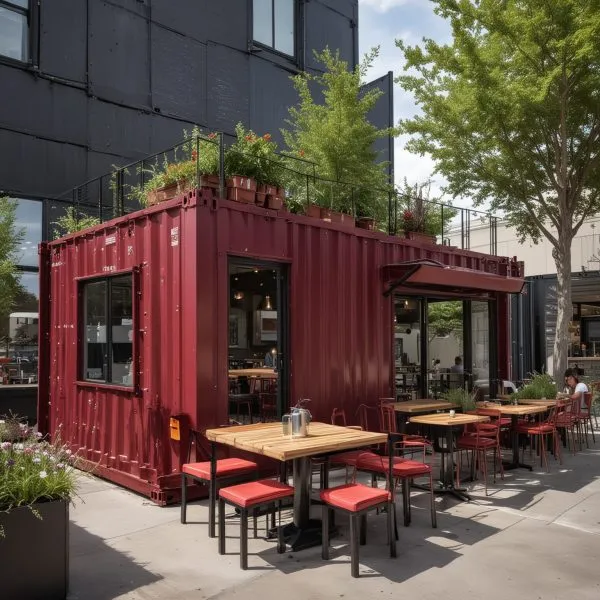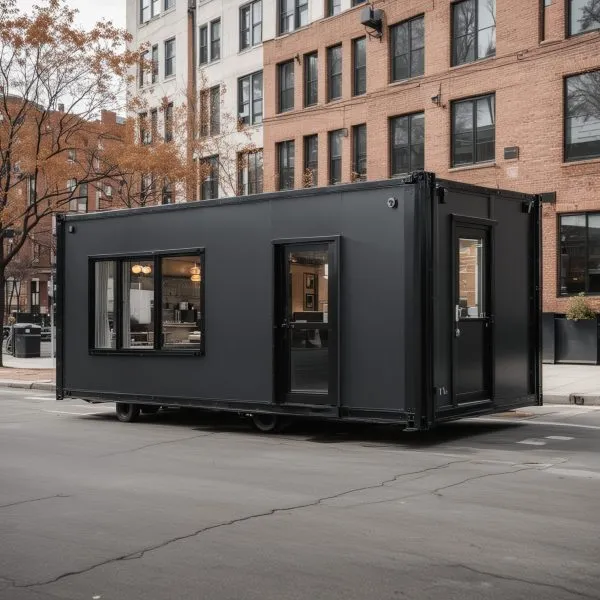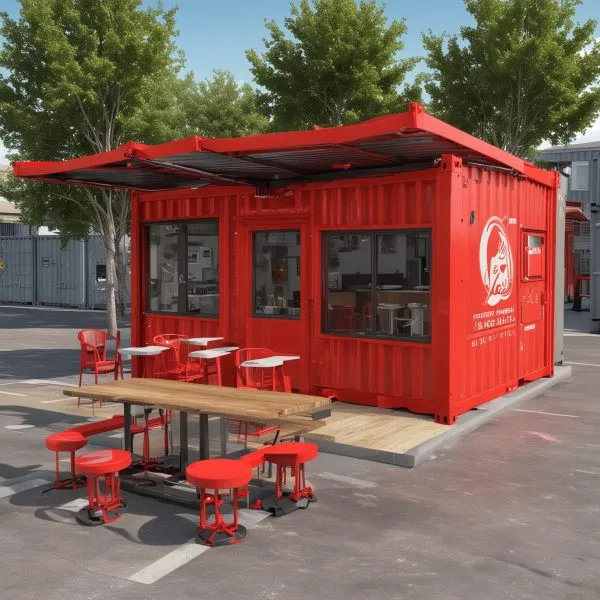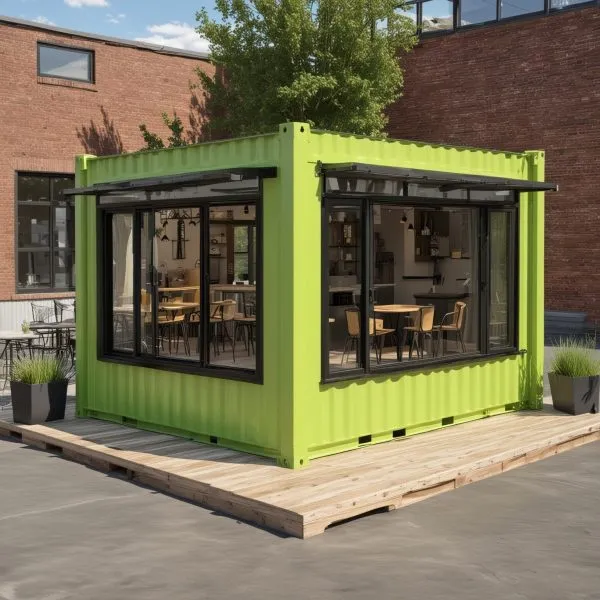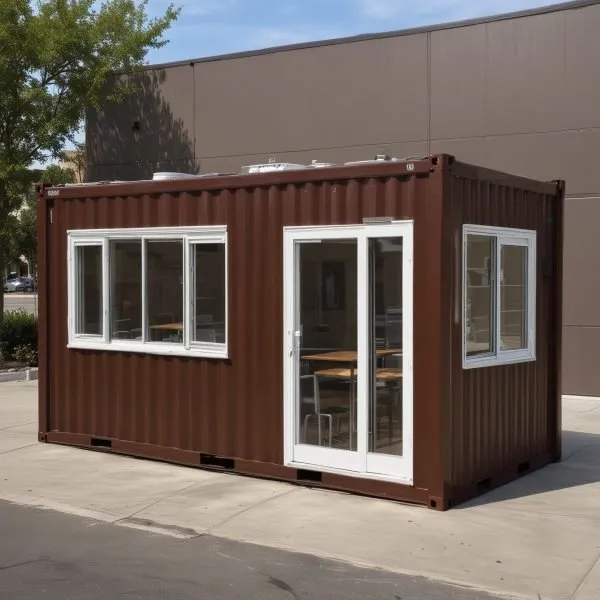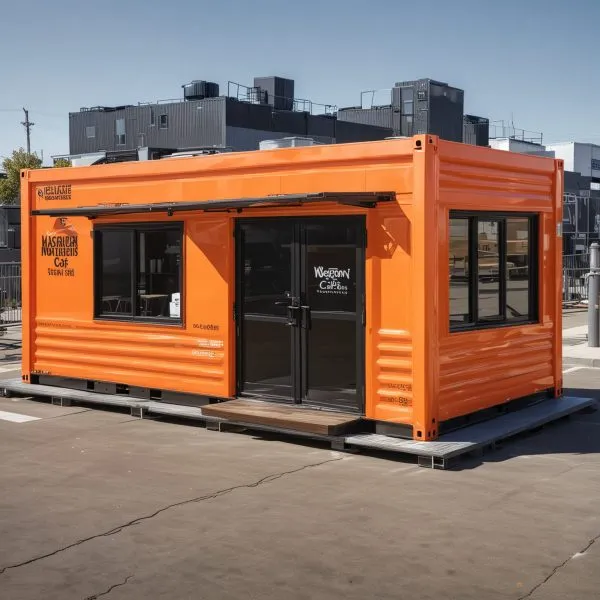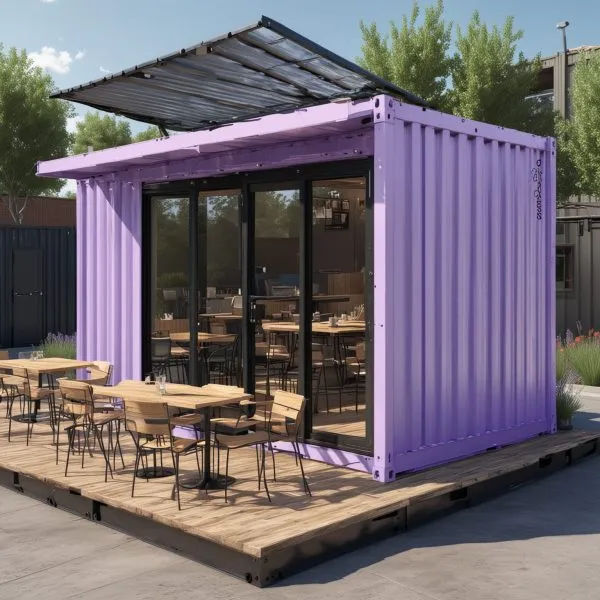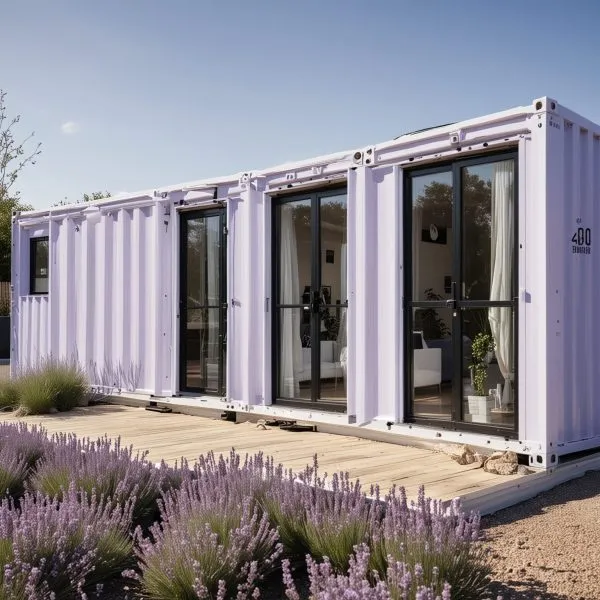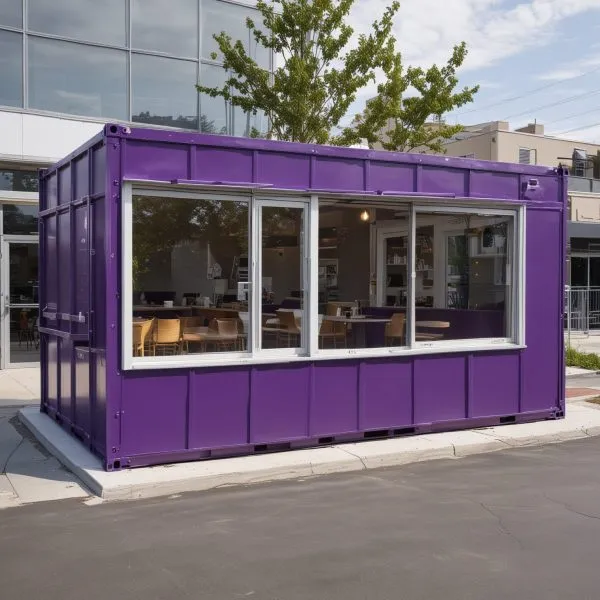Portable Building Solutions: Modern Designs for Versatile and Efficient Spaces

In a world where flexibility and sustainability are increasingly vital, the rise of portable building solutions has transformed the way we approach modern architecture. These innovative structures, often referred to as modular or relocatable buildings, offer a compelling alternative to traditional construction methods. But what sets these portable buildings apart, and how can they reshape the way we think about workspaces and living spaces?
Portable cabins, prefab houses, and container offices have evolved far beyond their humble beginnings, now boasting cutting-edge designs, energy-efficient features, and the ability to adapt to a wide range of applications. From temporary site offices to versatile healthcare facilities, these prefabricated structures are redefining the boundaries of what’s possible in the realms of commercial, industrial, and even residential spaces.
But what are the driving forces behind this shift towards portable building solutions? How can these modern designs address the growing demand for versatile, cost-effective, and sustainable spaces? As we explore the intriguing world of portable architecture, the answers may surprise you and challenge your perceptions of what’s possible in the built environment.
Key Takeaways
- Portable buildings offer flexible and cost-effective solutions for various applications, from site offices to healthcare facilities.
- These prefabricated structures are designed for quick installation and ease of transportation, making them suitable for a wide range of uses.
- Portable buildings are known for their energy-efficient features and reduced environmental impact compared to traditional construction methods.
- Customization and modular design allow for tailored solutions to meet specific business needs.
- Portable building solutions are reshaping the way we think about workspaces and living spaces, providing versatile and sustainable alternatives.
Understanding Modern Portable Architecture
The world of portable buildings has evolved significantly, transforming from basic structures used for temporary housing and offices on construction sites to multifunctional spaces that serve diverse purposes, including classrooms, medical clinics, and versatile workspaces. This evolution has been driven by the increasing demand for flexible, affordable, and sustainable solutions across various industries.
Evolution of Modular Construction
Portable cabins have come a long way, with the introduction of modular construction techniques that have revolutionized the industry. In the early 1950s, U.S. companies pioneered a simple form of portable housing that could function as both holiday homes and long-term living spaces, leading to the creation of districts of portable buildings around popular cities. Similarly, prefabricated construction gained popularity in Finland in the 1960s, resulting in a significant decrease in on-site construction activities.
Key Components of Portable Buildings
- Durable materials: Portable buildings are often constructed using steel and reinforced panels, ensuring long-lasting quality and durability.
- Customizable layouts: Portable buildings offer flexible and customizable layouts, allowing businesses to tailor their spaces to meet their specific needs.
- Insulation: Advancements in insulation technology have improved the energy efficiency and thermal comfort of portable buildings, providing a more comfortable and sustainable living or working environment.
Current Market Trends
The portable building market has witnessed significant growth, driven by the need for flexible, cost-effective, and eco-friendly solutions. Portable Porta Cabins, Eco-Friendly Porta Cabins, and Portable Living Cabins have become increasingly popular, offering businesses and organizations a range of versatile options to address their evolving space requirements. Container offices, in particular, have emerged as a creative reuse of shipping containers, providing eco-friendly and adaptable workspaces that cater to the changing needs of the modern workforce.

The portable building industry has seen significant improvements in areas such as insulation, durability, and design flexibility, driven by the need for more adaptable and cost-effective solutions across various sectors. As the demand for flexible and sustainable spaces continues to grow, the future of portable architecture looks promising, with further advancements and innovative designs on the horizon.
Benefits of Prefabricated Structures
When it comes to modern construction solutions, prefabricated structures are rapidly gaining popularity. These innovative Premium Portable Cabins, Modular Portable Cabins, and other Portable Cabins India offer a host of benefits that make them an attractive choice for both commercial and residential projects.
One of the key advantages of prefabricated structures is their flexibility and versatility. These buildings can be customized to meet specific requirements, and they can be easily expanded, reconfigured, or relocated as needed. This adaptability allows organizations to optimize their spaces and adapt to changing needs over time.
- The prefabrication process significantly reduces construction time, with projects potentially being completed up to 50% faster than traditional building methods.
- Prefabricated materials are often more cost-effective, as the standardized manufacturing process and bulk purchasing of materials can lead to substantial savings.
- Prefabricated structures are built to last, using high-quality materials that ensure durability and longevity. They are designed to withstand harsh weather conditions, making them suitable for a wide range of environments.
- The construction of prefabricated structures generates less waste compared to traditional building methods, and the materials used can be easily recycled or repurposed, contributing to environmental sustainability.
Overall, the benefits of prefabricated structures make them an increasingly attractive choice for businesses and organizations seeking modern, efficient, and eco-friendly construction solutions. By leveraging the advantages of these innovative building systems, you can create versatile and sustainable spaces that meet your unique needs.

Portable Building Solutions for Commercial Spaces
In the dynamic world of commerce, businesses seek flexible and cost-effective solutions to meet their ever-changing needs. Portable building solutions have emerged as a versatile option, catering to the diverse requirements of commercial spaces. From Container Offices Near You to Flexible Container Offices and Affordable Container Spaces, these modular structures provide a range of benefits that traditional construction often struggles to match.
Office and Workspace Solutions
For businesses seeking comfortable and functional workspaces, portable buildings offer a compelling solution. These structures can be customized to accommodate project managers, engineers, and staff, providing them with the necessary amenities to work efficiently. The adaptability of Flexible Container Offices allows companies to create tailored environments that cater to their unique operational needs.
Retail and Hospitality Applications
In the ever-evolving retail and hospitality landscape, Container Offices Near You can serve as temporary showrooms, kiosks, or storage units, offering a cost-effective way to expand commercial space. These portable cabins can be strategically positioned to capture the attention of potential customers, providing businesses with the flexibility to adapt to changing market demands.
Industrial Uses and Advantages
The versatility of portable building solutions extends to industrial applications as well. Affordable Container Spaces can be utilized as site offices on construction projects, storage spaces for tools and equipment, or temporary facilities for remote work sites. These structures can be equipped with essential amenities, ensuring comfortable working conditions for personnel in diverse industrial settings.
The versatility of portable cabins makes them suitable for a wide range of commercial applications, providing businesses with the flexibility to expand or relocate as needed. By offering Flexible Container Offices and Affordable Container Spaces, these innovative solutions enable companies to adapt to evolving market conditions and enhance their operational efficiency.

Sustainable Features and Environmental Impact
Portable cabins and container offices are designed with sustainability in mind, offering a range of eco-friendly benefits. Many of these structures are crafted using recycled steel and other sustainable materials, significantly reducing the environmental impact of construction. They require less energy to build and maintain compared to traditional buildings, resulting in a smaller carbon footprint.
Energy efficiency is a key focus, with features like robust insulation, energy-efficient lighting, and the potential for solar panel integration. The reusability of portable buildings conserves materials and prevents the environmental impact of continuously creating and demolishing structures. The prefabrication process also minimizes waste and emissions, and the shorter construction time reduces disruption at the building site.
According to industry reports, the global green building materials market is expected to reach US$ 716.4 Billion by 2032, growing at a CAGR of 8.18% during 2024-2032. This surge in sustainable architecture buildings and Eco-Friendly Porta Cabins is driven by the construction industry’s focus on alternative, recyclable, and renewable materials to reduce waste and energy consumption.

Technologies like IoT-based metering systems, active energy efficiency, and digitization are also transforming the way we monitor and manage energy usage in these portable structures. By enhancing existing buildings with green solutions like solar panel generation and energy storage, we can contribute to the overall sustainability of these spaces.
The design and retrofitting of buildings play a crucial role in transitioning towards greener infrastructure. Innovations in energy usage, waste minimization, environment preservation, and promoting occupant well-being are vital aspects of sustainable building practices for the future.
Cost-Effectiveness and ROI Analysis
When it comes to modern business solutions, Affordable Container Spaces and Compact Portable Offices offer compelling cost-effectiveness and impressive returns on investment (ROI). As companies increasingly seek ways to optimize their operational expenses, these innovative portable building solutions have emerged as smart financial choices.
Initial Investment Considerations
Compared to traditional construction methods, the initial setup costs for portable buildings are significantly lower. With minimal site preparation required, businesses can enjoy a more streamlined and cost-effective installation process. This translates to substantial savings, allowing companies to allocate their resources more efficiently.
Long-term Financial Benefits
The true value of Affordable Container Spaces and Compact Portable Offices lies in their long-term financial benefits. These structures are designed for reusability, enabling businesses to relocate or repurpose them as needed. This flexibility reduces the burden of constantly investing in new infrastructure, leading to substantial cost savings over time.
Maintenance Cost Comparison
Maintaining portable buildings is generally more cost-effective compared to traditional construction. The use of durable materials and innovative design features means these structures require less upkeep, leading to lower maintenance expenses. This advantage further enhances the overall cost-effectiveness of Affordable Container Spaces and Compact Portable Offices.
By embracing the cost-effective and ROI-driven nature of modern portable building solutions, businesses can unlock significant financial advantages while meeting their evolving space requirements. Whether purchasing or renting, these innovative options offer a practical and sustainable path to optimizing operational expenses.
Customization Options and Design Flexibility
At the heart of Flexible Portable Workspaces and Portable Office Manufacturer solutions lies an unparalleled level of customization and design flexibility. These modern pre-engineered buildings (PEBs) are designed to adapt seamlessly to the unique needs and preferences of businesses, empowering them to create spaces that truly reflect their brand and vision.
The adaptability of steel structural buildings enables architects and designers to experiment with various design elements, from the exterior façade and color schemes to the internal layout and fixtures. This level of customization ensures that each Flexible Portable Workspace or Portable Office solution is tailored to the specific requirements of the client, whether it’s a high-end corporate office or a specialized industrial facility.
- Modular layouts allow for easy expansion or reduction of workspace as needed, catering to the evolving needs of businesses.
- Interior customization options include choices in flooring, wall finishes, furniture, and fixtures, allowing for a personalized and functional workspace.
- Integrated technology solutions, such as smart lighting, automated temperature controls, and high-speed internet, enhance the overall efficiency and user experience.
The versatility of these Flexible Portable Workspaces and Portable Office solutions makes them suitable for a wide range of applications, from corporate offices and retail spaces to industrial facilities and temporary structures. By seamlessly blending form, function, and flexibility, Portable Office Manufacturer is revolutionizing the way businesses approach their workspace requirements.

Construction Timeline and Installation Process
Portable building solutions offer a distinct advantage when it comes to construction timelines and installation processes. Unlike traditional construction methods that can take months, the prefabrication and modular design of small portable office for sale and prefab steel buildings significantly streamline the entire process.
Site Preparation Requirements
The site preparation requirements for portable buildings are minimal. Typically, the ground only needs to be leveled, and proper access for delivery must be ensured. This preparation phase can be completed in as little as 4 to 8 weeks, a fraction of the time required for traditional construction projects.
Assembly and Setup Procedures
The assembly and setup procedures for portable buildings are remarkably efficient. Thanks to the prefabrication process, much of the construction is completed off-site, allowing for a rapid deployment on-site. Depending on the size and complexity of the structure, a small portable office for sale or prefab steel building can be fully installed within a couple of weeks, sometimes even in a matter of days.
This streamlined construction timeline is particularly beneficial for businesses that need quick solutions or operate in time-sensitive environments. By minimizing disruption and allowing for faster occupancy, portable building solutions offer a practical and versatile alternative to traditional construction methods.

Material Innovation and Durability
At the forefront of the prefab steel buildings and Premium Portable Cabins revolution, material innovation plays a pivotal role in enhancing the durability and performance of these versatile structures. Leveraging cutting-edge technologies and sustainable practices, the construction industry is pioneering the use of high-quality materials that not only ensure long-lasting strength but also align with environmental considerations.
Prefab steel buildings, for instance, are renowned for their exceptional resilience, capable of withstanding extreme weather conditions and requiring minimal maintenance. These structures are engineered with reinforced panels and high-grade steel, providing uncompromising structural integrity that can last for decades with proper care. Similarly, Premium Portable Cabins harness the power of innovative insulation materials, improving energy efficiency and creating comfortable, climate-controlled environments for occupants.
Sustainability is also a driving force behind material innovation in the portable building industry. The integration of recycled and eco-friendly components, such as mycelium-based composites and hemp-derived materials, is gaining traction. These advancements not only contribute to a smaller carbon footprint but also showcase a commitment to environmental responsibility, catering to the growing demand for sustainable construction solutions.

The durability of these innovative materials translates to the long lifespan of portable buildings, which can often exceed 15 to 25 years with proper maintenance. This longevity is a testament to the industry’s dedication to delivering high-performance, cost-effective, and environmentally conscious building solutions that meet the evolving needs of modern enterprises and communities.
Smart Technology Integration
As the demand for sustainable architecture buildings and Flexible Portable Workspaces grows, the integration of smart technology has become a game-changer. Automation systems and energy management solutions are revolutionizing the way portable structures function, enhancing their overall efficiency and environmental impact.
Automation Systems: Optimizing Comfort and Control
Portable buildings equipped with smart automation systems offer unparalleled convenience and control. From intelligent lighting and temperature regulation to advanced security measures, these systems work in harmony to create comfortable and secure workspaces. Automated controls adjust lighting levels and climate settings based on occupancy, ensuring optimal energy usage and enhancing the overall user experience.
Energy Management Solutions: Sustainable Practices, Tangible Results
Sustainable architecture buildings and Flexible Portable Workspaces are increasingly incorporating innovative energy management solutions to reduce their carbon footprint. Solar panels, energy-efficient appliances, and smart metering systems work together to optimize energy consumption and generate renewable power. These technologies not only contribute to environmental responsibility but also result in significant long-term cost savings for businesses.
The integration of smart technology in portable buildings is a testament to the industry’s commitment to sustainability and innovation. By harnessing the power of automation and energy management, we can create Flexible Portable Workspaces that are not only efficient and functional but also environmentally conscious, elevating the future of portable architecture.

Regulatory Compliance and Safety Standards
As the Portable Office Manufacturer and Portable Cabins India markets continue to grow, it is crucial for these structures to adhere to strict regulatory compliance and safety standards. This ensures the well-being of occupants and maintains the integrity of the built environment. Manufacturers of portable buildings must be diligent in meeting all necessary requirements, from building codes and zoning regulations to fire safety and electrical codes.
In India, specific guidelines and regulations govern the use of portable cabins and container offices. Responsible Portable Office Manufacturers prioritize compliance with these standards to provide secure and legally compliant structures. They work closely with local authorities to obtain the necessary permits and approvals before installing any portable building.
- The ICC and Modular Building Institute (MBI) have initiated a joint project to develop standard requirements for off-site and modular construction, addressing aspects such as permitting, inspections, and the role of regulatory bodies.
- The ICC/NSSA 1205 Standard for Off-Site Construction: Inspection and Regulatory Compliance is available for adoption by jurisdictions throughout the United States.
- The ICC/MBI Off-Site and Modular Construction Standard Consensus Committee is responsible for establishing minimum requirements to safeguard public health, safety, and welfare through regulations for off-site and modular construction.
By adhering to these safety standards and regulatory guidelines, Portable Cabins India and other portable building providers can ensure their structures meet the highest levels of quality and protection for end-users. This commitment to compliance is essential in delivering reliable, secure, and legally compliant portable solutions.

Mobile and Temporary Space Solutions
In today’s dynamic business landscape, the need for flexible and easily deployable space solutions is more prevalent than ever. Portable Living Cabins and Flexible Container Offices have emerged as innovative answers to this challenge, providing a wide range of mobile and temporary space solutions that cater to diverse industries and applications.
Emergency Response Applications
When disaster strikes, the ability to rapidly deploy temporary structures is crucial. Portable buildings can be swiftly installed as mobile clinics, emergency response units, or temporary housing in areas affected by natural disasters. Their mobility and quick setup allow for immediate relief and support, ensuring that essential services and accommodations are available where they’re needed most.
Event and Short-term Usage
From pop-up shops to temporary event spaces, Portable Living Cabins and Flexible Container Offices offer versatile solutions for businesses with fluctuating space requirements. These structures can serve as ticket booths, merchandise displays, or hospitality hubs, catering to the ever-changing needs of the event industry. Their ability to be easily relocated and repurposed makes them a practical choice for businesses operating in multiple locations or seeking short-term space solutions.
The flexibility and rapid deployment of these portable structures make them invaluable in situations requiring immediate, short-term solutions. Their mobility allows for easy relocation as needs change, providing businesses and organizations with the agility to adapt to evolving circumstances.
Whether it’s emergency response efforts, event-based activations, or temporary workspace requirements, Portable Living Cabins and Flexible Container Offices offer a versatile and efficient answer to the growing demand for mobile and temporary space solutions.
Climate Adaptability and Weather Resistance
As the global climate continues to evolve, the need for adaptable and weather-resistant building solutions has become increasingly crucial. Portable Porta Cabins and Premium Portable Cabins are designed to meet this challenge, offering versatile and resilient structures that can thrive in a wide range of environments.
One of the key advantages of portable buildings is their ability to be customized for specific climatic conditions. They can be outfitted with additional insulation for extreme temperatures, reinforced structures for high-wind areas, and weather-resistant coatings for harsh environments. This adaptability ensures that these structures can be deployed effectively in diverse geographical locations, from hot and humid tropical regions to cold and snowy areas.
The durability and weather resistance of portable cabins contribute to their long-term viability and cost-effectiveness. By withstanding the rigors of various weather patterns, these buildings can maintain their structural integrity and functionality, reducing the need for frequent repairs or replacements.
- Customizable insulation for extreme temperatures
- Reinforced structures for high-wind areas
- Weather-resistant coatings for harsh environments
- Suitable for diverse climates, from tropical to snowy regions
- Durable and weather-resistant for long-term performance
As the global climate continues to evolve, the demand for innovative and adaptable building solutions will only grow. Portable Porta Cabins and Premium Portable Cabins are poised to play a crucial role in providing versatile and resilient structures that can withstand the challenges posed by changing weather patterns and environmental conditions.
Future Trends in Portable Architecture
As the world continues to evolve, the future of portable architecture is poised to take center stage. Sustainable architecture buildings and Modular Portable Cabins are at the forefront of this exciting transformation, offering innovative solutions that blend environmental responsibility with practical business needs.
One of the key trends in portable architecture is the increased focus on sustainability. Portable buildings are now leveraging eco-friendly materials, such as recycled steel, bamboo, and insulated panels, to enhance energy efficiency and reduce their environmental impact. Integrating renewable energy systems like solar panels is also becoming more common, further cementing the commitment to sustainable practices.
The integration of smart technology is another area that is shaping the future of portable architecture. Automated climate control systems and IoT-enabled security features are now seamlessly incorporated into portable buildings, creating intelligent and connected spaces that cater to the evolving needs of businesses and individuals.
Design aesthetics are also undergoing a transformation, with portable buildings embracing more visually appealing and architecturally innovative styles. Minimalist designs and compact layouts are gaining popularity, particularly in urban areas where space is at a premium. Customization options are also expanding, allowing for tailored solutions that meet specific functional requirements and aesthetic preferences.
As the world faces new challenges, portable architecture is poised to play a critical role in shaping the future of the industry. From providing emergency shelters and temporary housing solutions to serving as versatile workspaces and event venues, portable buildings are proving to be adaptable and resilient in the face of changing needs.
The future of portable architecture is bright, with a focus on sustainability, technology, and design innovation. As the demand for flexible, cost-effective, and environmentally responsible building solutions continues to grow, the portable architecture industry is well-positioned to lead the way in shaping the built environment of tomorrow.
Conclusion
Portable Building Solutions represent a significant advancement in modern construction, offering versatility, efficiency, and sustainability. These structures provide businesses and organizations in India with flexible, cost-effective options for a wide range of applications, from office spaces and retail units to emergency response facilities and event venues. As the industry evolves, we can expect to see further innovations in materials, design, and technology integration, making portable buildings an increasingly attractive option for those seeking adaptable and sustainable Portable Building Solutions and sustainable architecture buildings.
Portable buildings are generally more affordable compared to traditional construction methods, featuring lower upfront costs. Modern portable buildings are also designed with eco-friendly materials and energy-efficient technologies, catering to consumers in India who are concerned about sustainability. Companies like Acadiana Discount Portable Buildings, with their specialized expertise in metal structures and strong regional presence, are leading the way in providing innovative portable building solutions.
The future of construction in India is likely to see a greater emphasis on these efficient, environmentally friendly portable structures. With their cost-effectiveness, quick installation, and customization capabilities, portable buildings are poised to play a significant role in addressing the evolving space requirements of businesses, organizations, and communities across the country.
FAQ
What are portable cabins?
Portable cabins, also known as modular or relocatable buildings, are prefabricated structures designed for quick installation and ease of transportation. They offer flexible and cost-effective solutions for various applications, including site offices, temporary accommodations, classrooms, and healthcare facilities.
What are the key components of portable buildings?
Portable buildings are made from durable materials such as steel, aluminum, or wood, and are designed to withstand various environmental conditions. They come in different sizes and configurations, with customizable layouts and features like insulation, smart technology integration, and energy-efficient solutions.
What are the benefits of prefabricated structures?
Prefabricated structures offer numerous benefits, including flexibility and versatility, cost-effectiveness, quick installation, durability, and eco-friendliness. They can be customized to meet specific requirements and easily expanded, reconfigured, or relocated as needed.
How are portable buildings used in commercial spaces?
Portable building solutions are widely used in commercial spaces, such as offices, retail, and industrial applications. They provide comfortable and functional areas for project managers, engineers, and staff, as well as temporary showrooms, kiosks, or storage units.
What are the sustainable features of portable buildings?
Portable cabins and container offices are designed with sustainability in mind, offering eco-friendly benefits. Many are made from recycled materials, require less energy to build and maintain, and can be reused and relocated, reducing their environmental impact.
How cost-effective are portable buildings?
Portable buildings offer significant cost-effectiveness for businesses, with lower initial setup costs, minimal site preparation, and lower long-term maintenance expenses. Both purchasing and renting options are available, allowing businesses to choose the most cost-effective solution for their needs.
How customizable are portable buildings?
Portable buildings offer extensive customization options and design flexibility. They are available in various modular layouts, allowing businesses to expand or reduce their workspace as needed. Interior customization includes choices in flooring, wall finishes, furniture, and technology integration.
How quickly can portable buildings be installed?
The construction timeline and installation process for portable buildings are significantly shorter than traditional construction methods. Site preparation requirements are minimal, and assembly and setup procedures are efficient, with most portable cabins installed within a few days to a couple of weeks, depending on size and complexity.
What are the regulatory requirements for portable buildings?
Portable buildings must adhere to regulatory compliance and safety standards, including building codes, zoning regulations, and safety requirements. Manufacturers ensure their structures meet fire safety standards, electrical codes, and structural integrity requirements to provide secure and legally compliant structures.
How versatile are portable buildings in terms of applications?
Portable buildings excel in providing mobile and temporary space solutions. They can be quickly deployed as mobile clinics, emergency response units, or temporary housing in disaster-stricken areas, as well as event spaces, pop-up shops, and other short-term usage scenarios.
How do portable buildings perform in different climate conditions?
Portable buildings are designed for climate adaptability and weather resistance. They can be customized with additional insulation, reinforcements, and weather-resistant coatings to suit various environmental conditions, making them suitable for use in a wide range of geographical locations and climates.
What are the future trends in portable architecture?
Future trends in portable architecture point towards increased sustainability, advanced technology integration, and enhanced design aesthetics. There’s a growing focus on using eco-friendly materials, incorporating renewable energy systems, and integrating smart, connected features to improve efficiency and user experience.
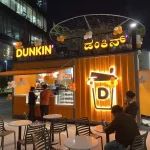 Container Cafe
Container Cafe